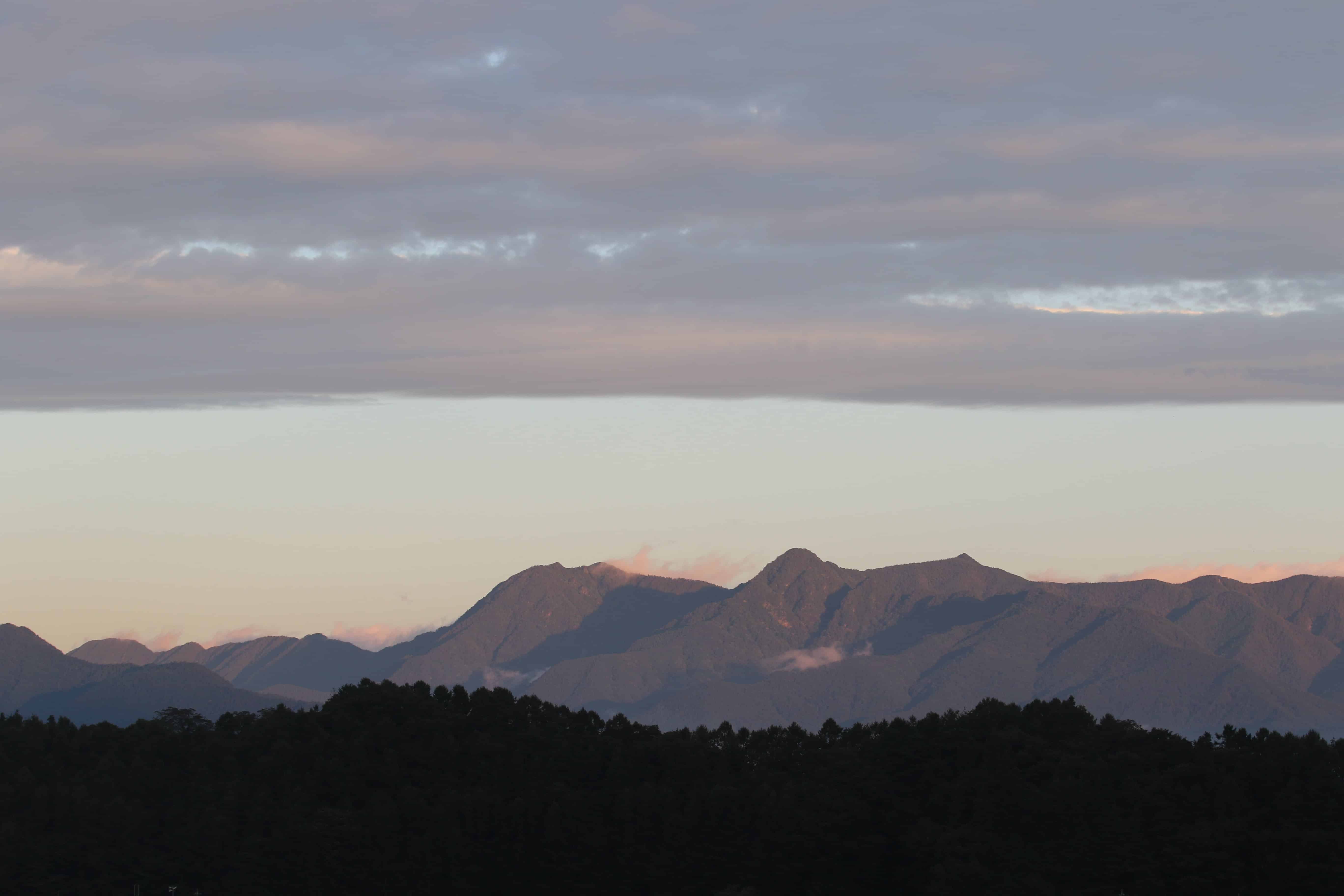The truth is that we didn’t know we were going to spend any time in the Mt. Fuji area when we headed to Japan this September, so we were thrilled to learn about Kaneyamaen, which you could say, is where luxury, nature and epic Japanese culture meet.
Hotel Kaneyamaen in Mt. Fuji’s Highlands
Kaneyamaen is a traditional Japanese Ryokan located in the highlands just north of the majestic and iconic Mt. Fuji. They are known for their stunning and tranquil gardens as well as the views, their hot springs (including in some rooms) and world class Japanese cuisine..
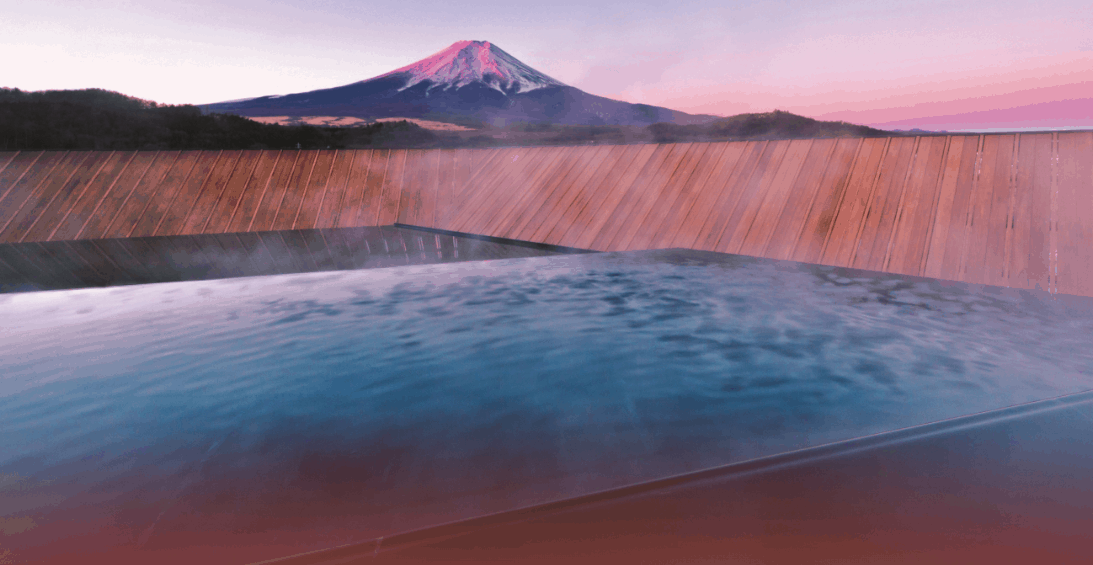
Open air hot springs on the roof at Kaneyamaen overlook Mt. Fuji and the views are breathtaking.
The primary reason to stay here is for their hot springs and the food. Their pure and natural hot springs come from deep below Mt.Fuji and they offer a variety of indoor and outdoor hot spring baths as well as one in your room, which depending on location, will likely have views of the iconic volcano.
Our room had a private open air bath and on the 10th floor, guests can soak while viewing Mt.Fuji and as some guests have apparently said: “It feels like you can almost reach out and touch it.” And truthfully, I felt that way too. Note that the above photo is the open air hot springs which rotates (women in the morning one day and men the next). You can have access to the other indoor hot springs every day for both the morning and evening.
Below are more sweeping views from this spectacular property.


Above 3 photo credits: Kaneyamaen Hotel
The Gardens
Then, there are the beautiful Japanese style gardens, another incredible reason to stay here.



Views of the gardens and the pool at Hotel Kaneyamaen, also reachable from the main dining room on the ground floor.
Anthony and I walked through the gardens on more than one occasion during our few day stay — it’s so serene and peaceful that it makes a great place to meditate, read a book, have a cup of tea or simply take a walk. One of our new friends from the Kofu area showed us around.

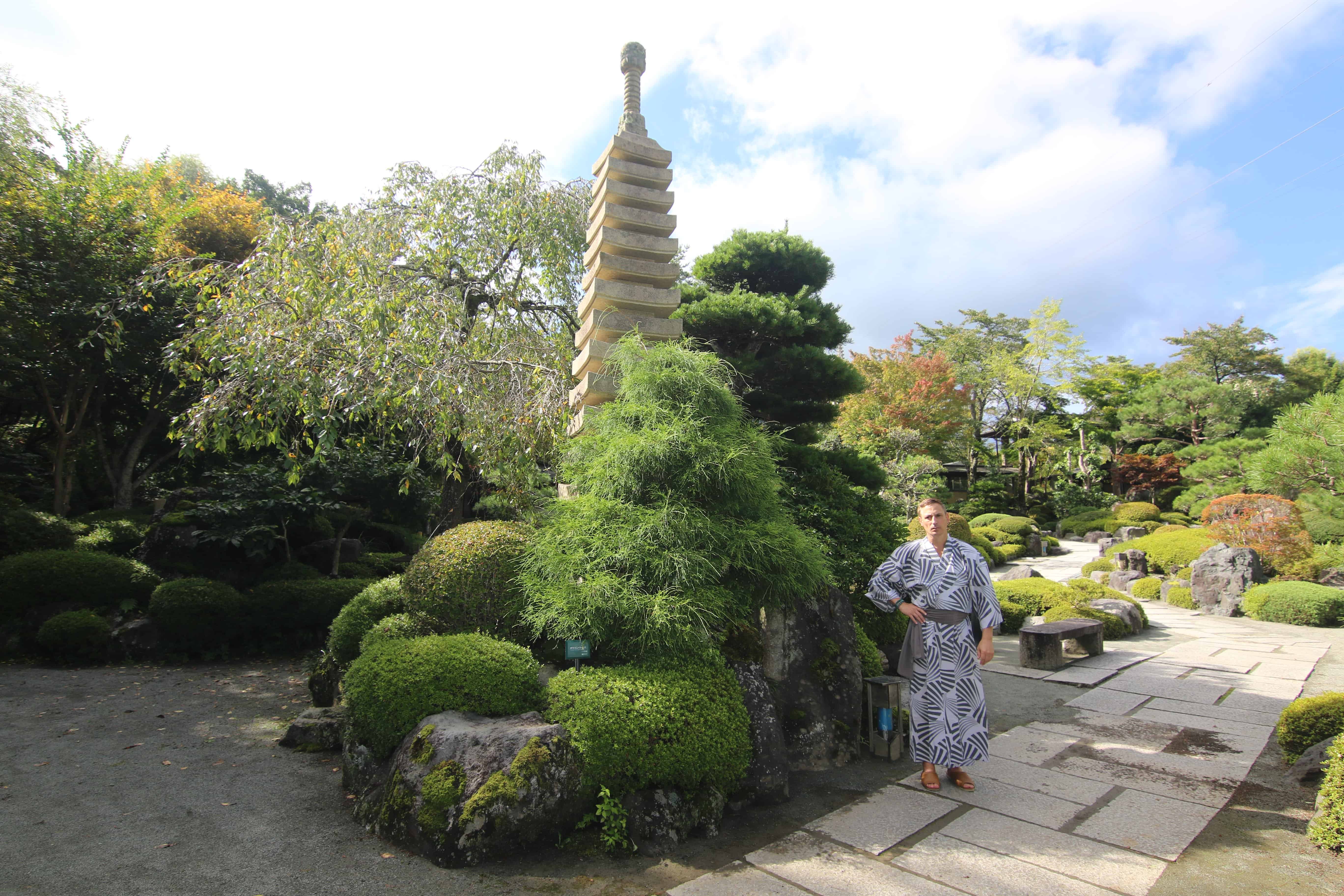
Above and below, in the gardens at Hotel Kaneyamaen




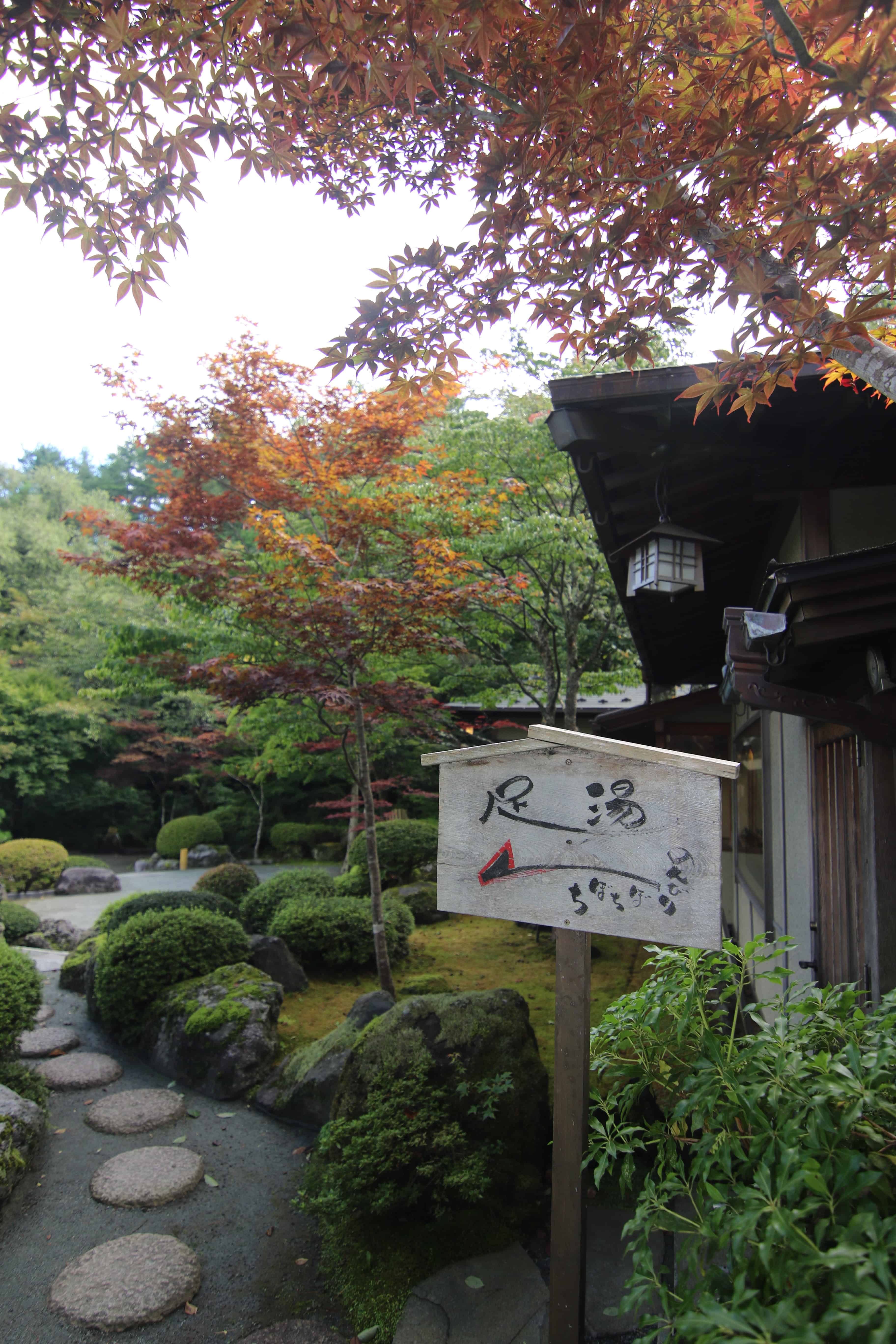
Kaneyamaen Gardens


Also on the premises is a renowned Japanese artist who used to play a Samurai warrior on film. Today, he paints beautiful imagery and Dragons in his studio amidst the gardens at Hotel Kaneyamaen.

Artist on-site at Hotel Kaneyamaen
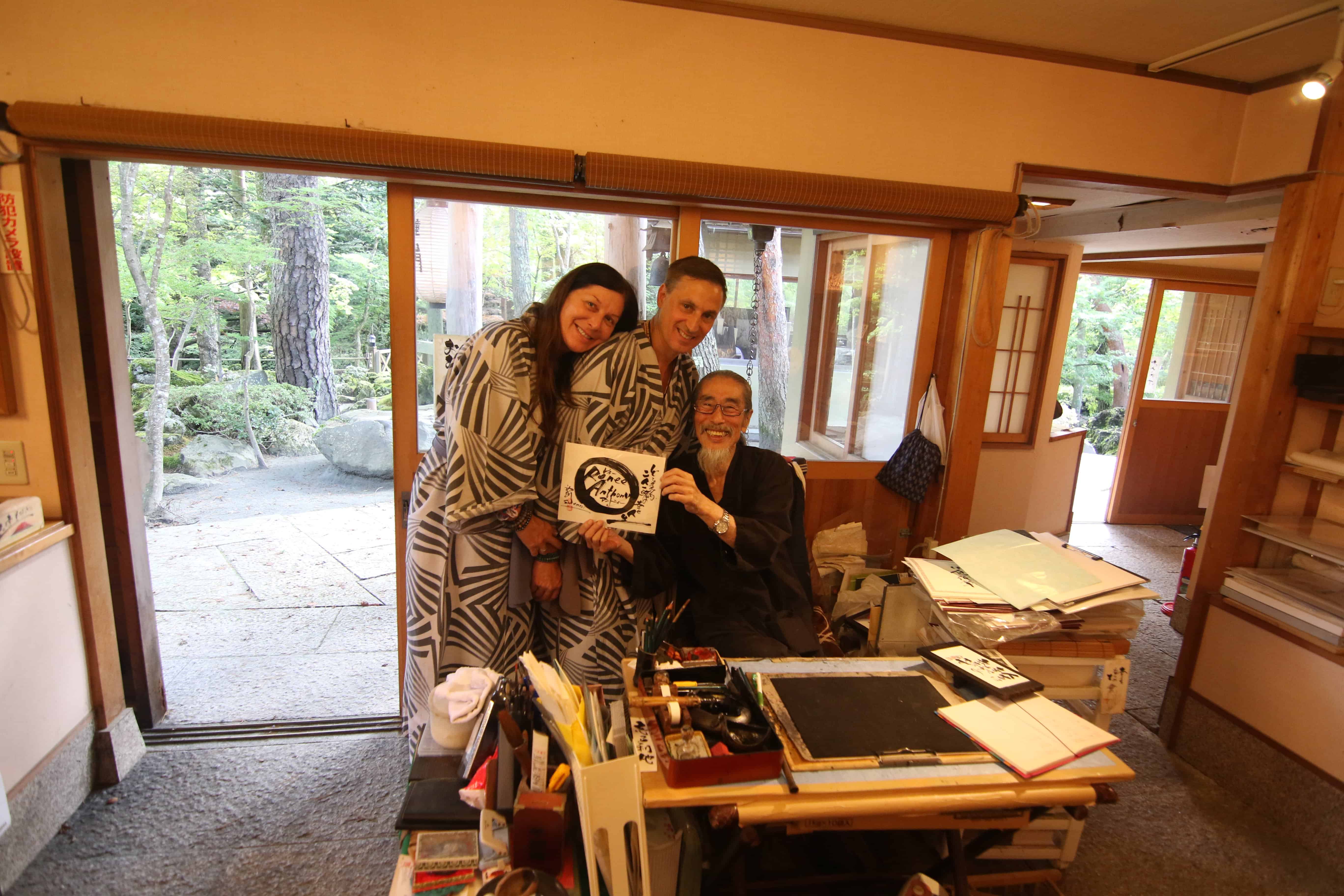
He made a special drawing for us, using both English letters and Japanese characters. What a special being!!
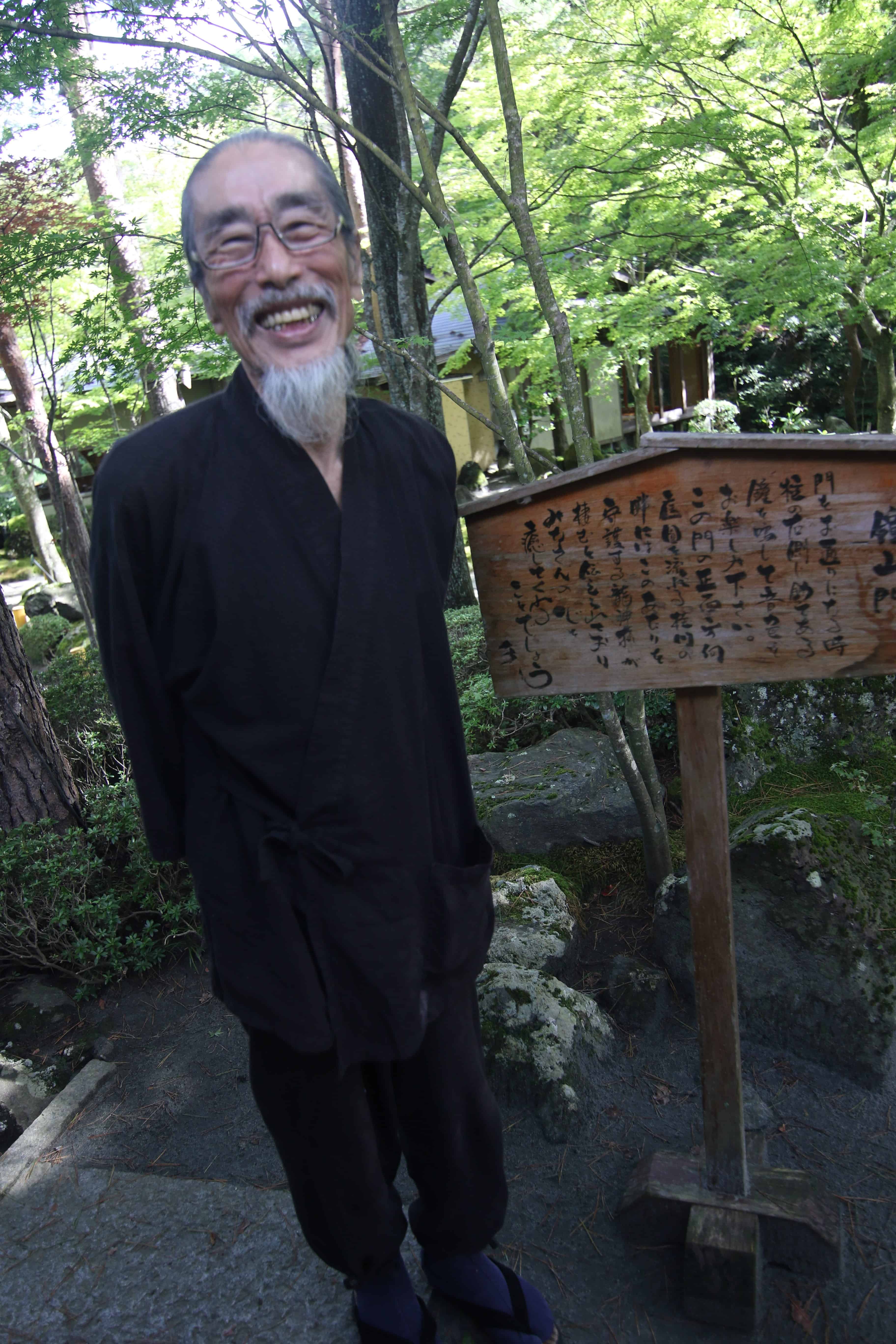
Below, his studio.

A Journey Back in Time
As you walk around the hotel (inside and out), you have moments of reflection and a feeling of going back in time. This isn’t because the hotel is outdated in any way, but moreso because of its commitment to family (swimming pool, the drum ceremony every night, tons of attractions nearby to do), tradition (the dinners, the full Japanese buffet offerings as well as Western options), the fine dining restaurant where you sit at the same table each night and service (service that you don’t see in other hotels in Japan or the USA).

A broader view of the outside of the hotel from another angle.
Public areas inside the hotel…..it isn’t uncommon to see people in robes and other traditional Japanese clothing they include in your room.


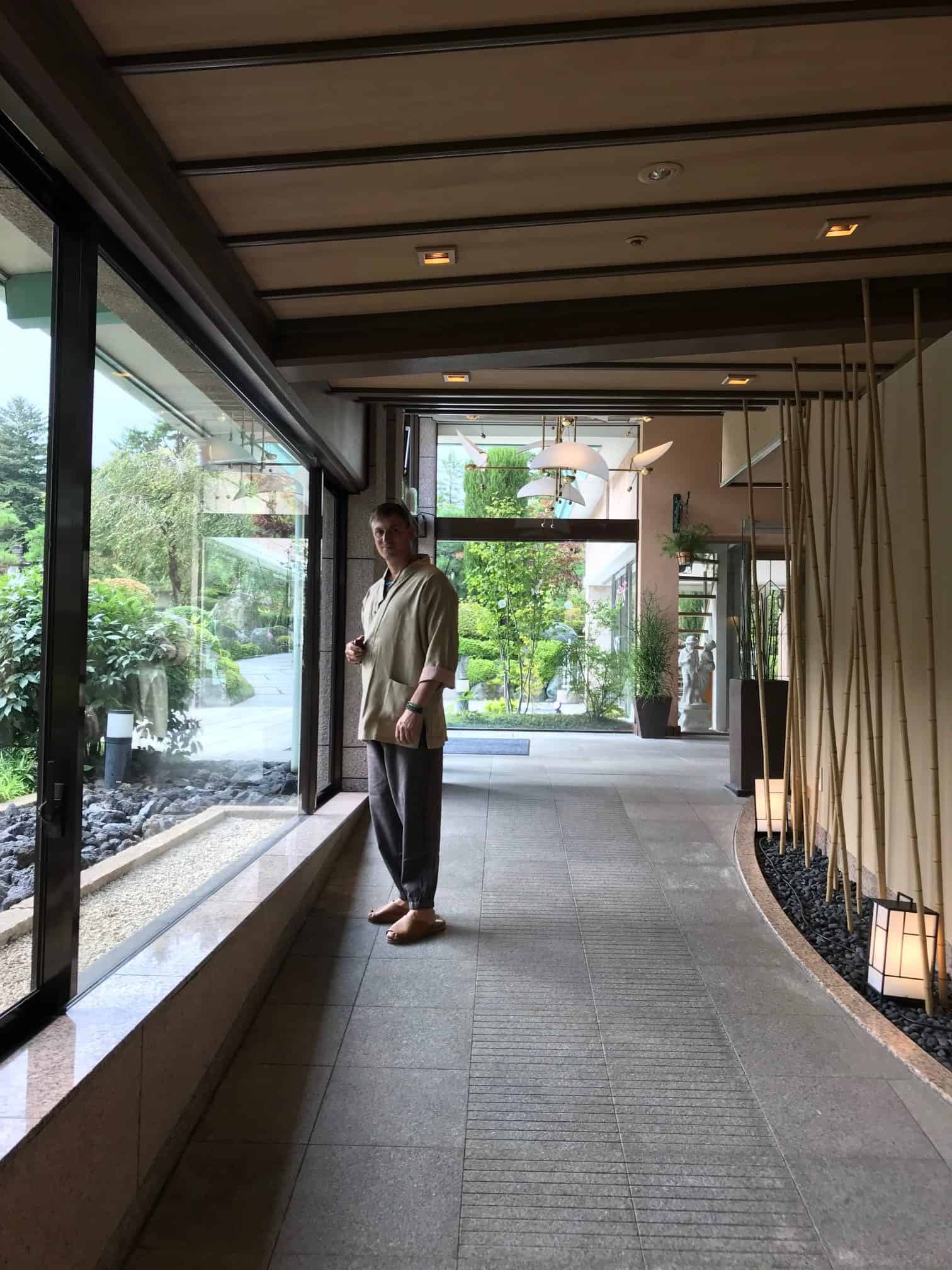
Anthony wears one of the traditional Japanese garments offered to us in our room at Kaneyamaen.
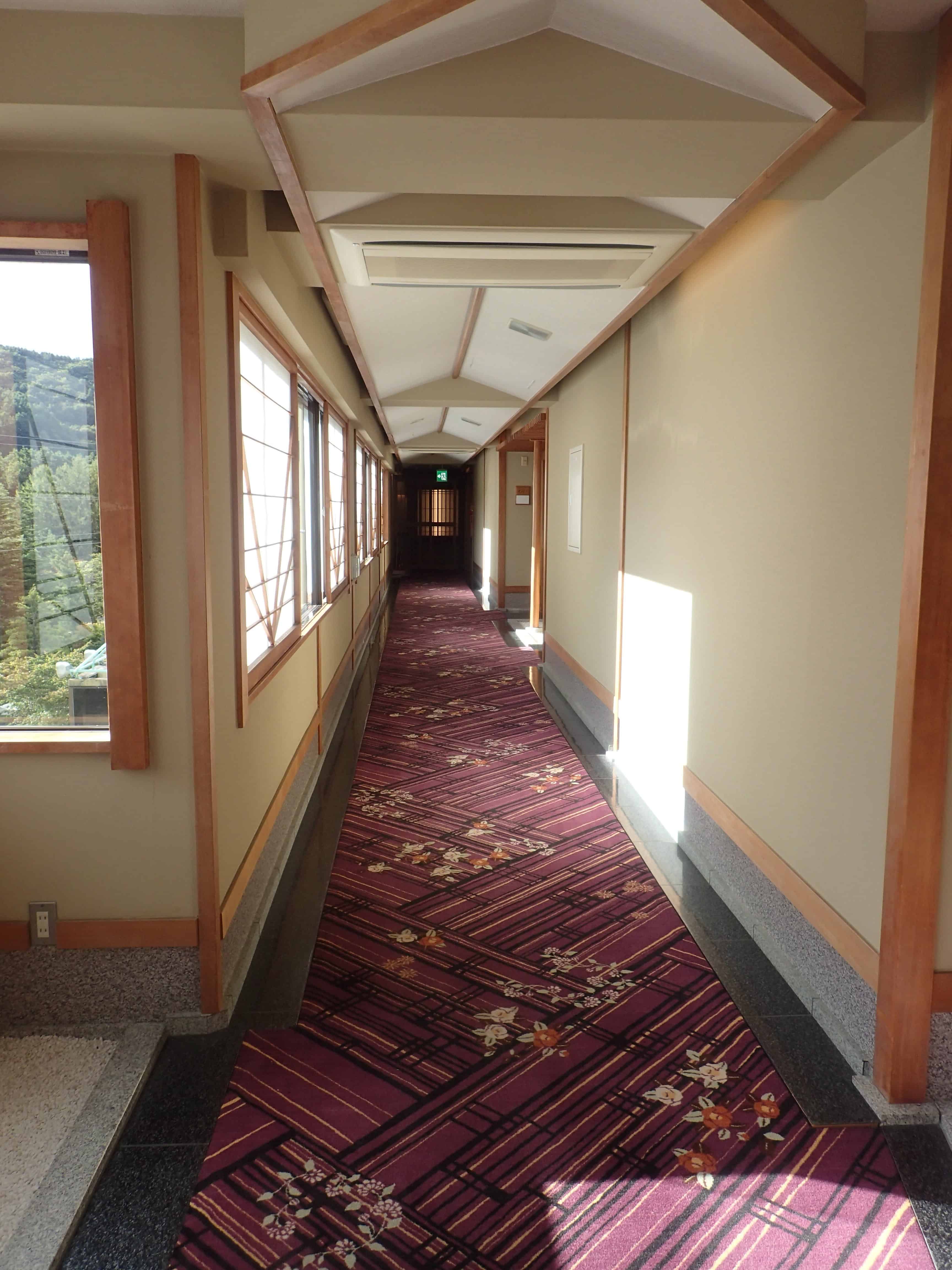
The hallways at Kaneyamaen.
Omotenashi
Omotenashi is the Japanese way of hospitality. And this is something Kaneyamaen had in spades, from the moment we checked in through to the moment we left. They guided us to the tearoom located in the garden where traditional Japanese tea ‘matcha’ and sweets are served when we first arrived.
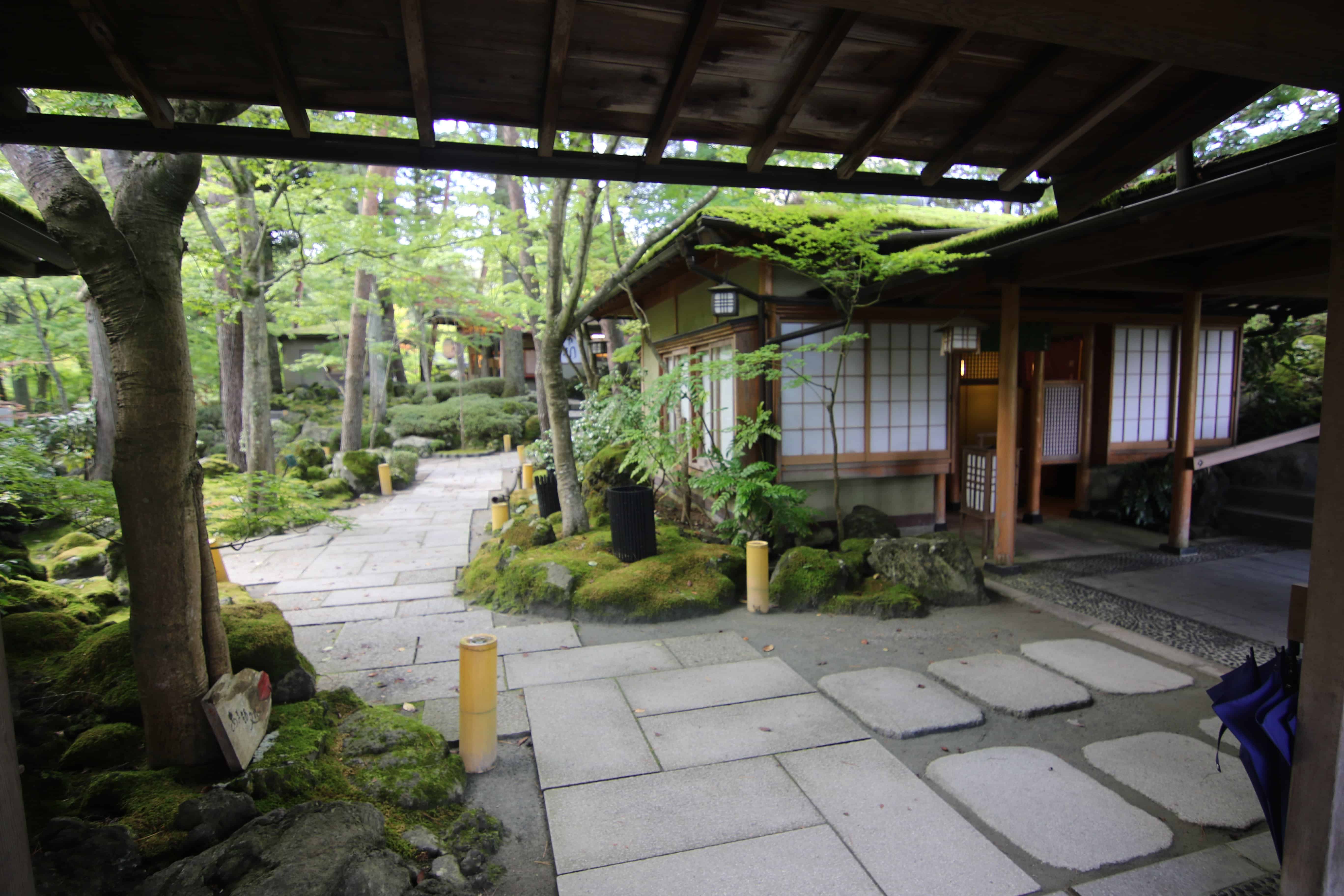
The Tea Room in the Kaneyamaen Gardens

Kaneyamaen Gardens
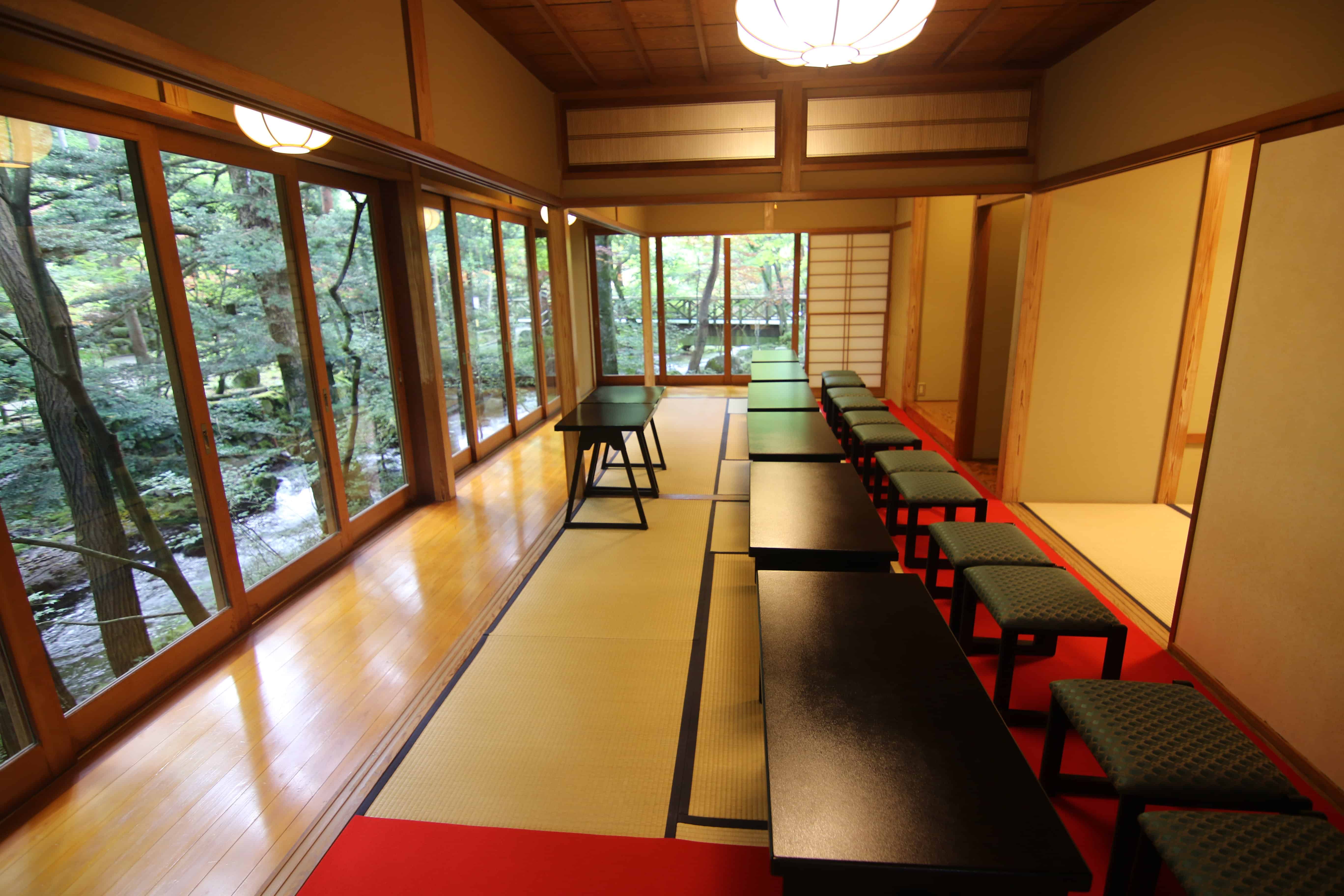
Above and below: the tea room at Kaneyamaen Gardens

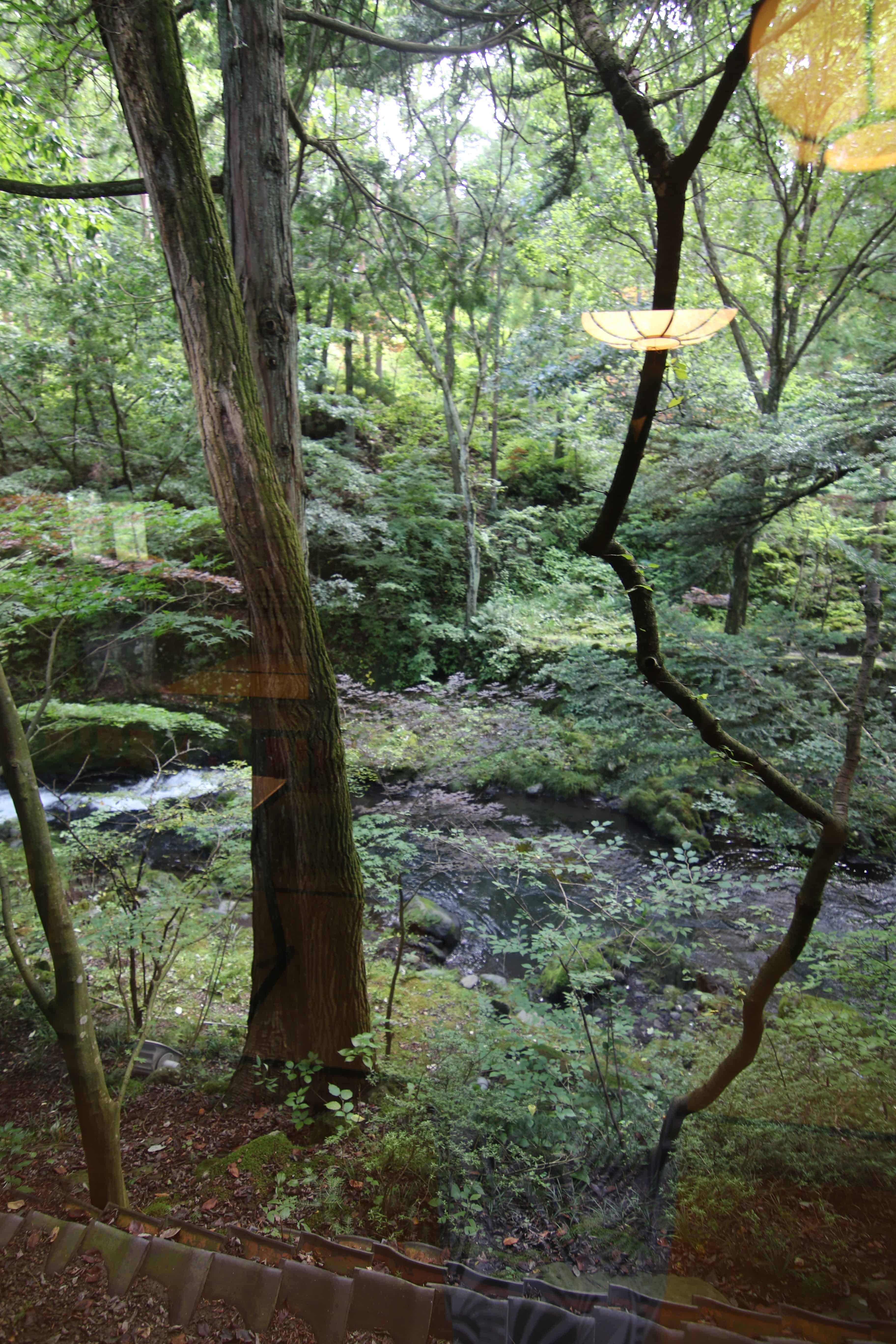
The view outside the tea room in the gardens at Kaneyamaen
There was always someone to greet or help you regardless of whether you were inside or outside the hotel.



More fun traditional Japanese clothing we wore when we hung out at the hotel in the public areas — some for more casual wear and others for dinner or robes specifically for the hot springs.

Inside the hotel
Below, the view outside the main breakfast room into the gardens.

The views from the higher floors



More higher floor views…..
Below, the lobby area.



Walking from the inside out to the gardens from one of the exits.
Fish in the waters of the Kaneyamaen Gardens
Walking through the hotel.


More garden magic (below)

In the gardens at Kanaeyamaen
Reiho Taiko
Every evening, there’s a sacred taiko drum stage show called ‘Reiho Taiko’. The performance is amazing and we were fortunate to be there for a few days — you can opt to see it daily or go for a more leisurely and quiet evening in your room or in one of the hot springs. We LOVED it — if you stay here, it’s a must see for at least one evening. And, if you have kids in tow, it’s a rewarding way to show them an aspect of Japanese culture.
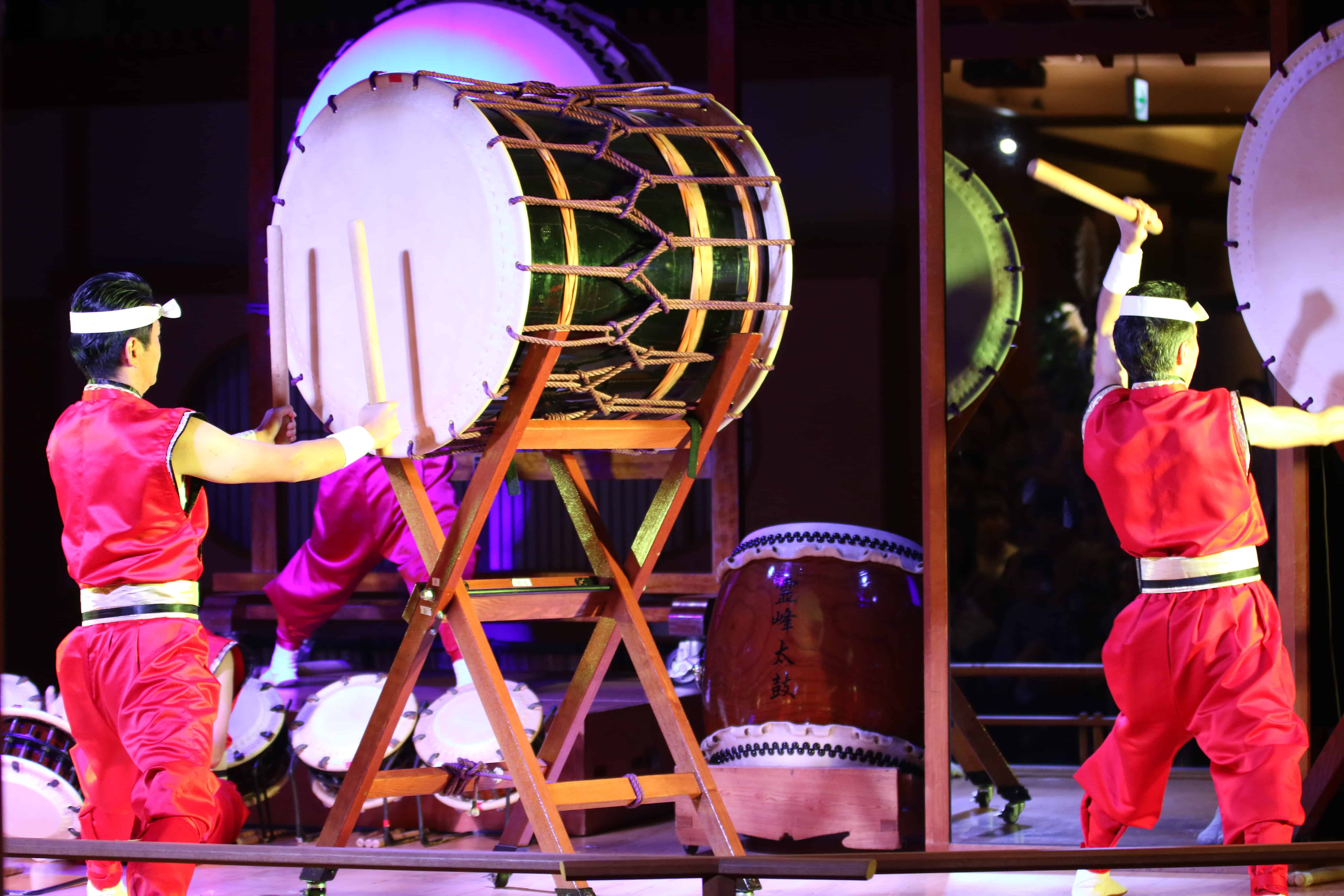
Kaneyamaen Nightly Drum Show.




Dining at Kaneyamaen
Below: entering the main dining room which is where we dined for breakfast and dinner.

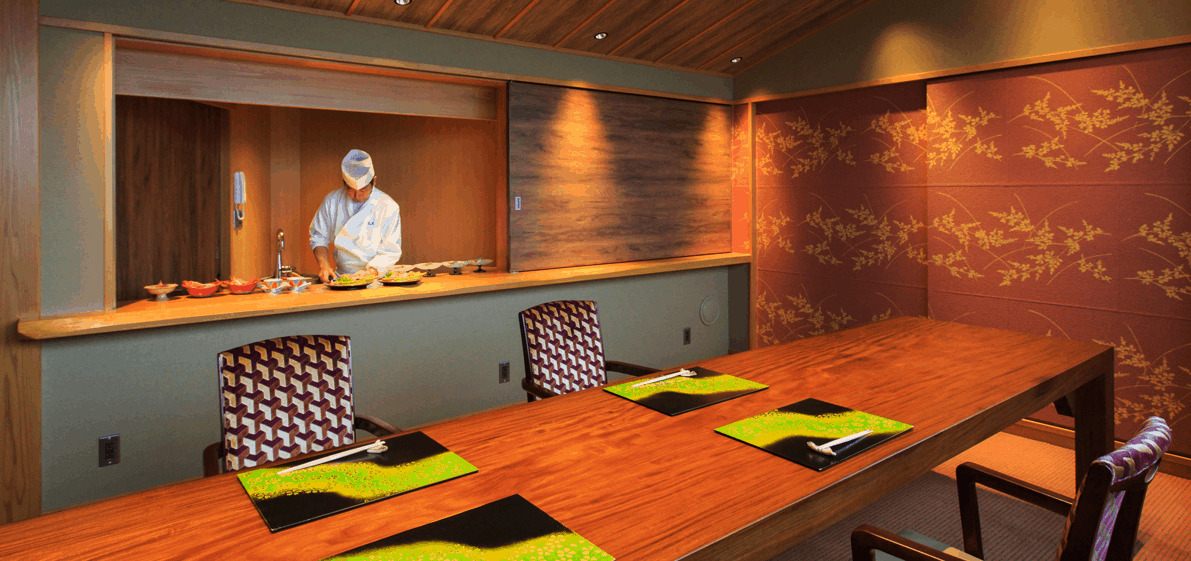
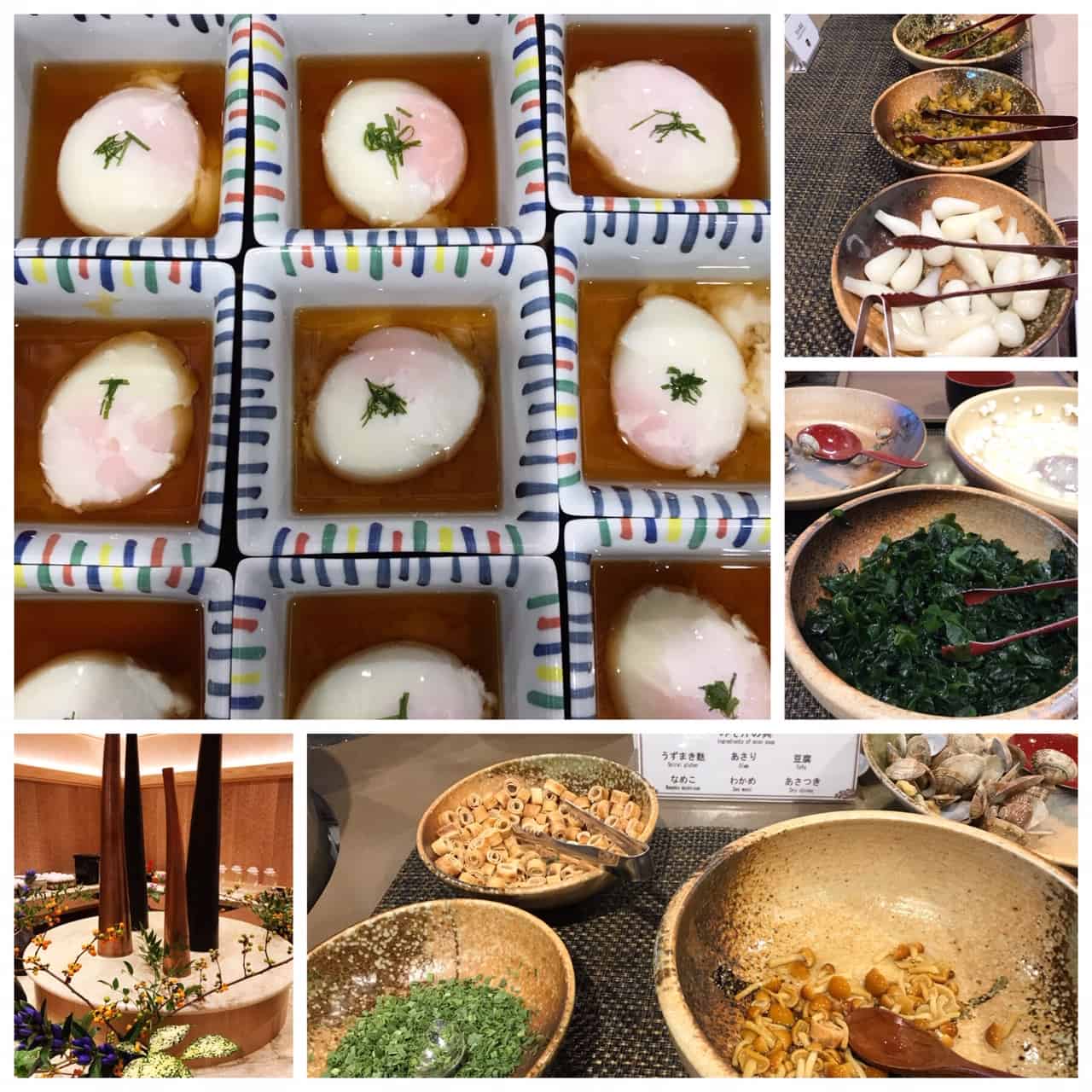
Japanese Breakfast Buffet: Imagine so many options?
Breakfast was heavenly. The food experience at Kaneyamaen is world class. Seafood is a staple of the Japanese diet as is rice, regardless of what time of day it is….and so, yes….seafood is served at breakfast as well. Below, Seafood Tororo. Note that above and below are shots taken at the buffet which is housed on the ground floor. In our case, buffet breakfast was offered one morning and the other morning, a more formal Japanese style meal in the main dining room.
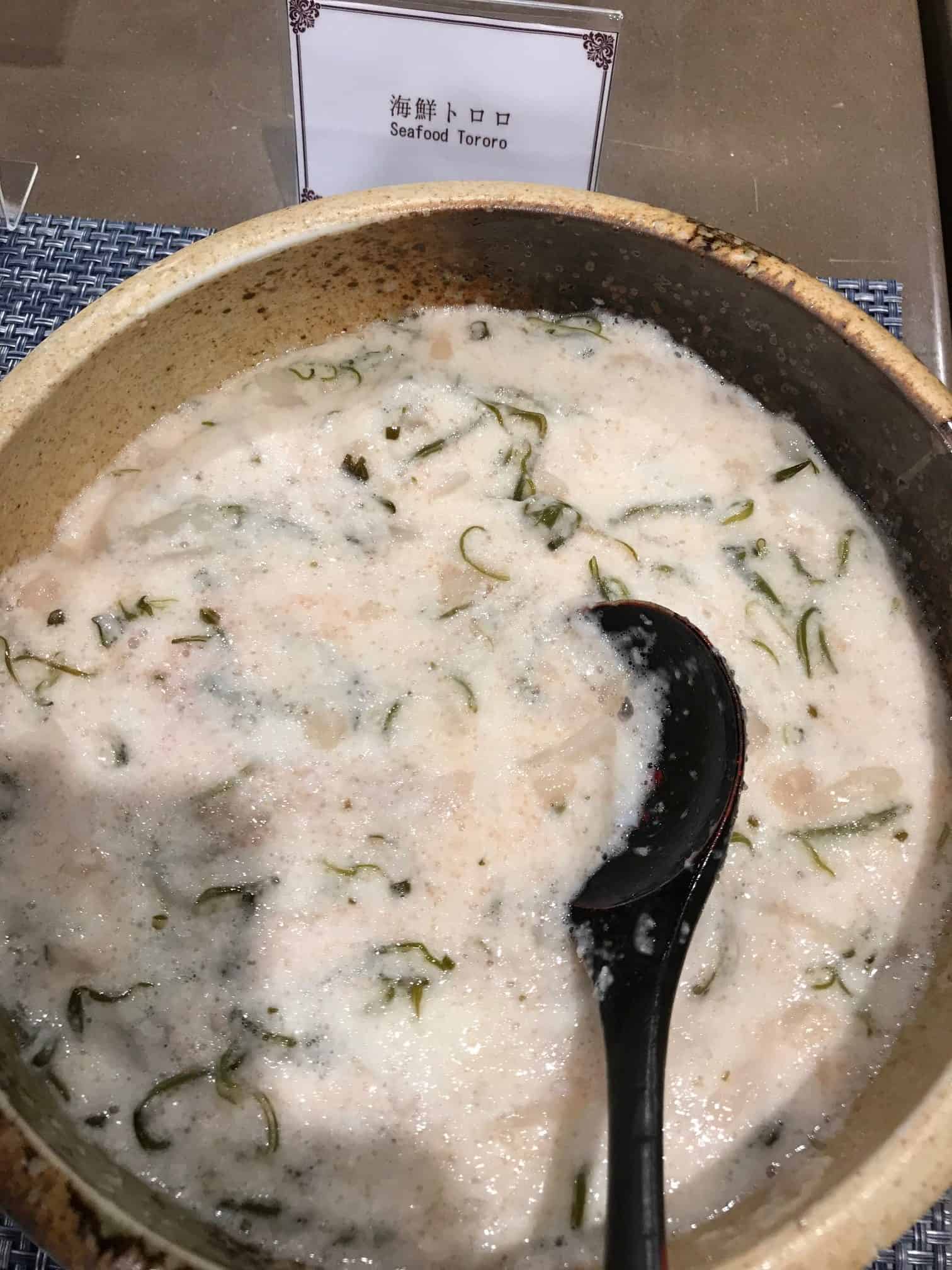
Below, stewed Hijiki!
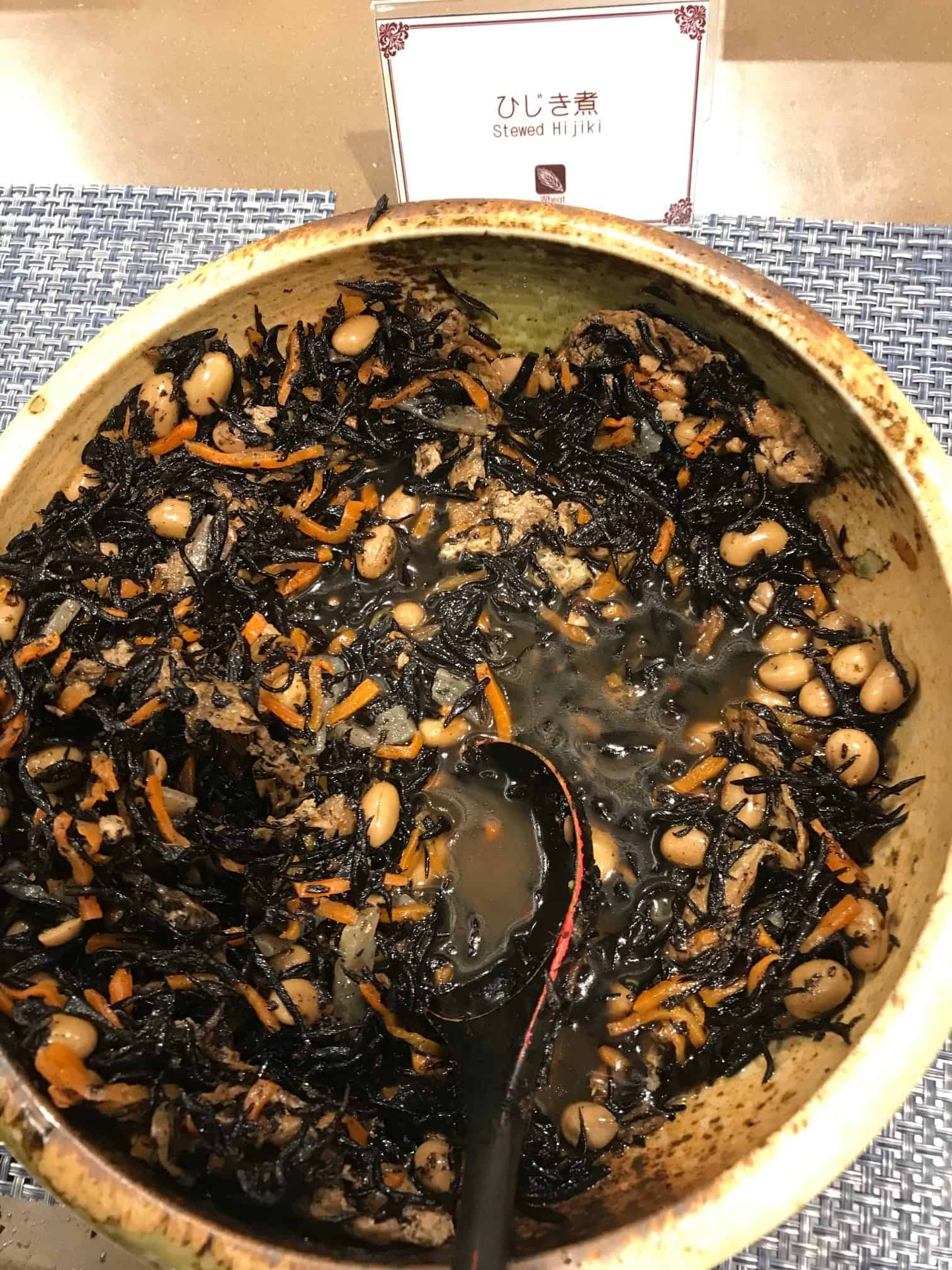
The Buffet Table
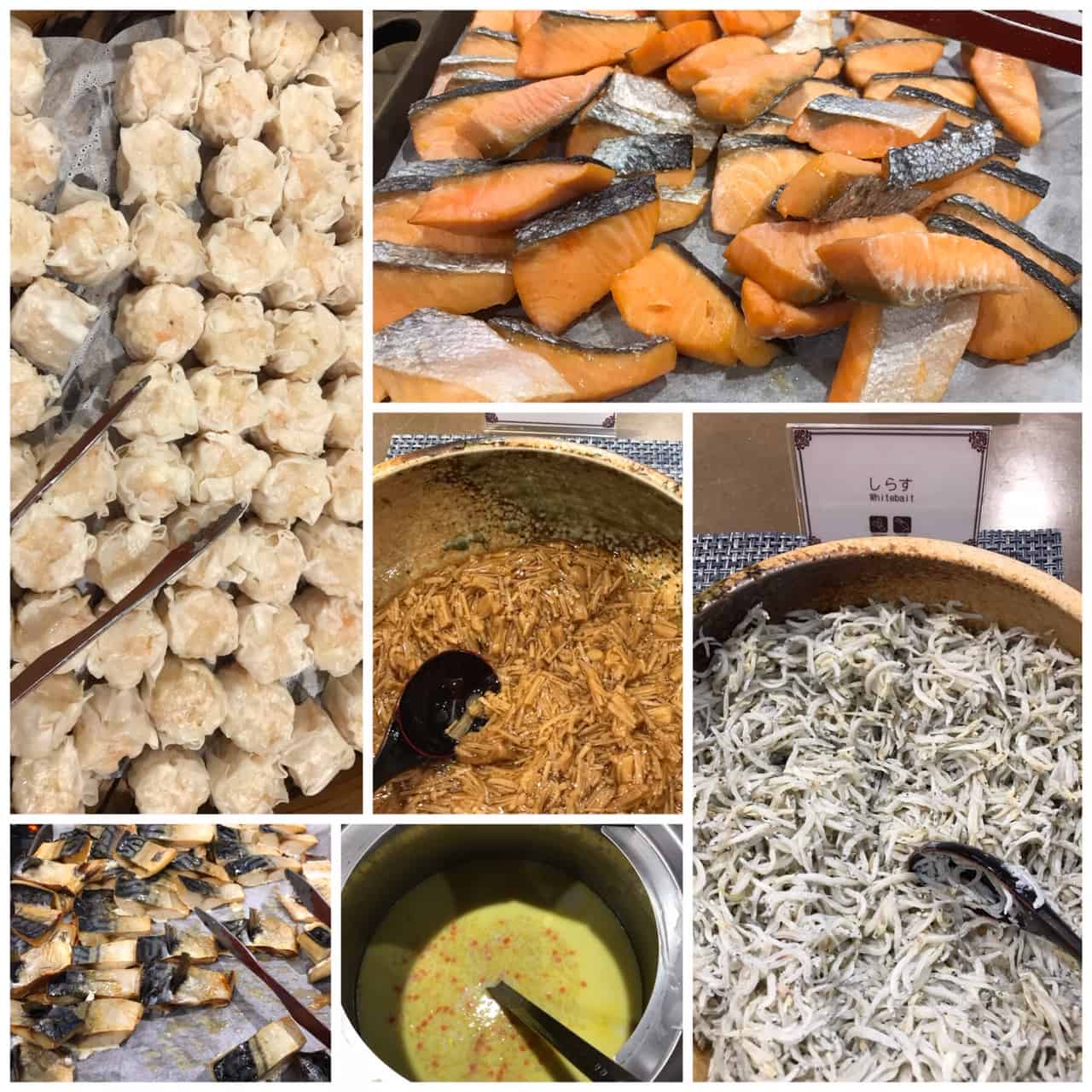
Below is a more formal version of our morning start in the dining room.
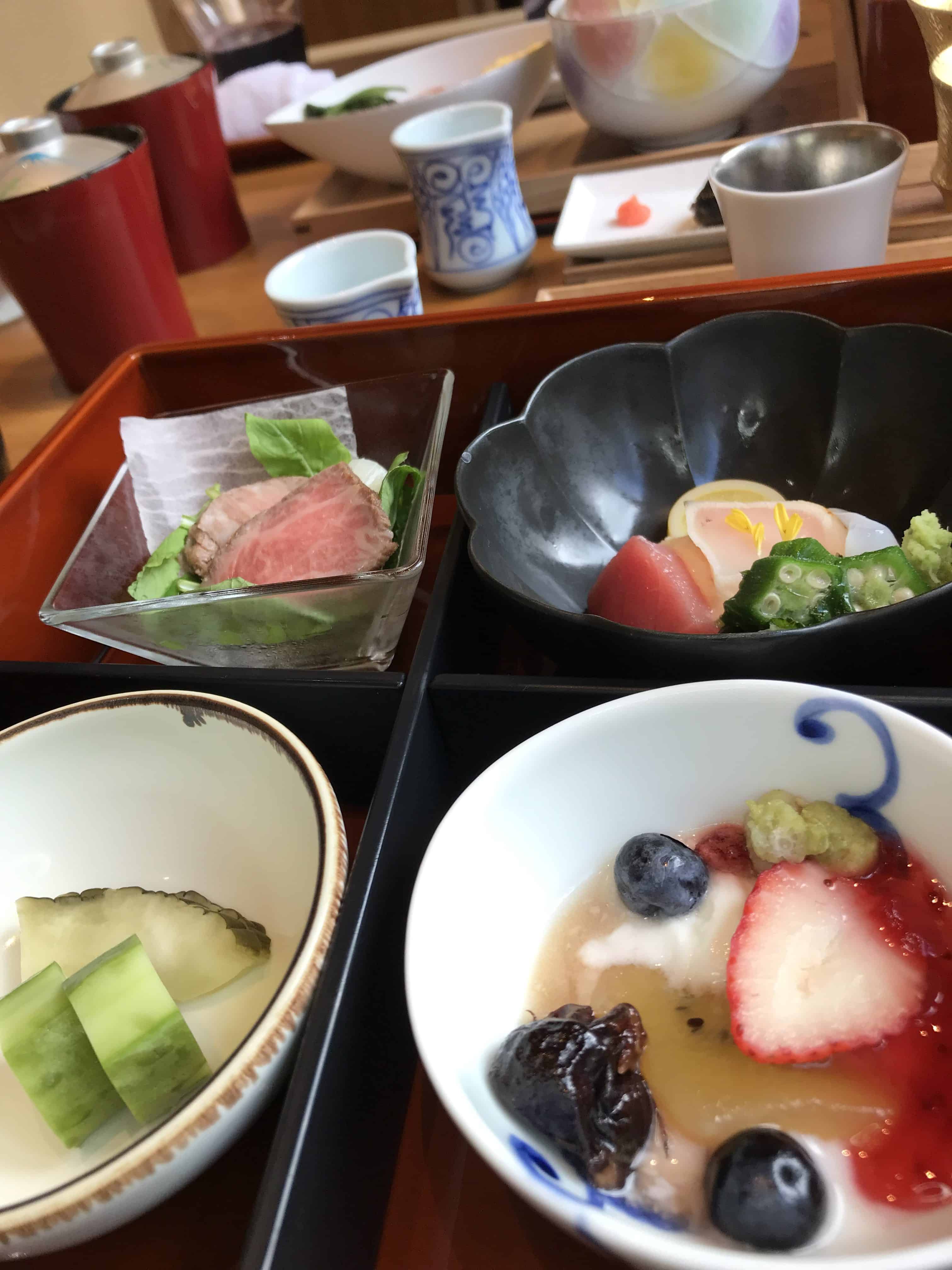
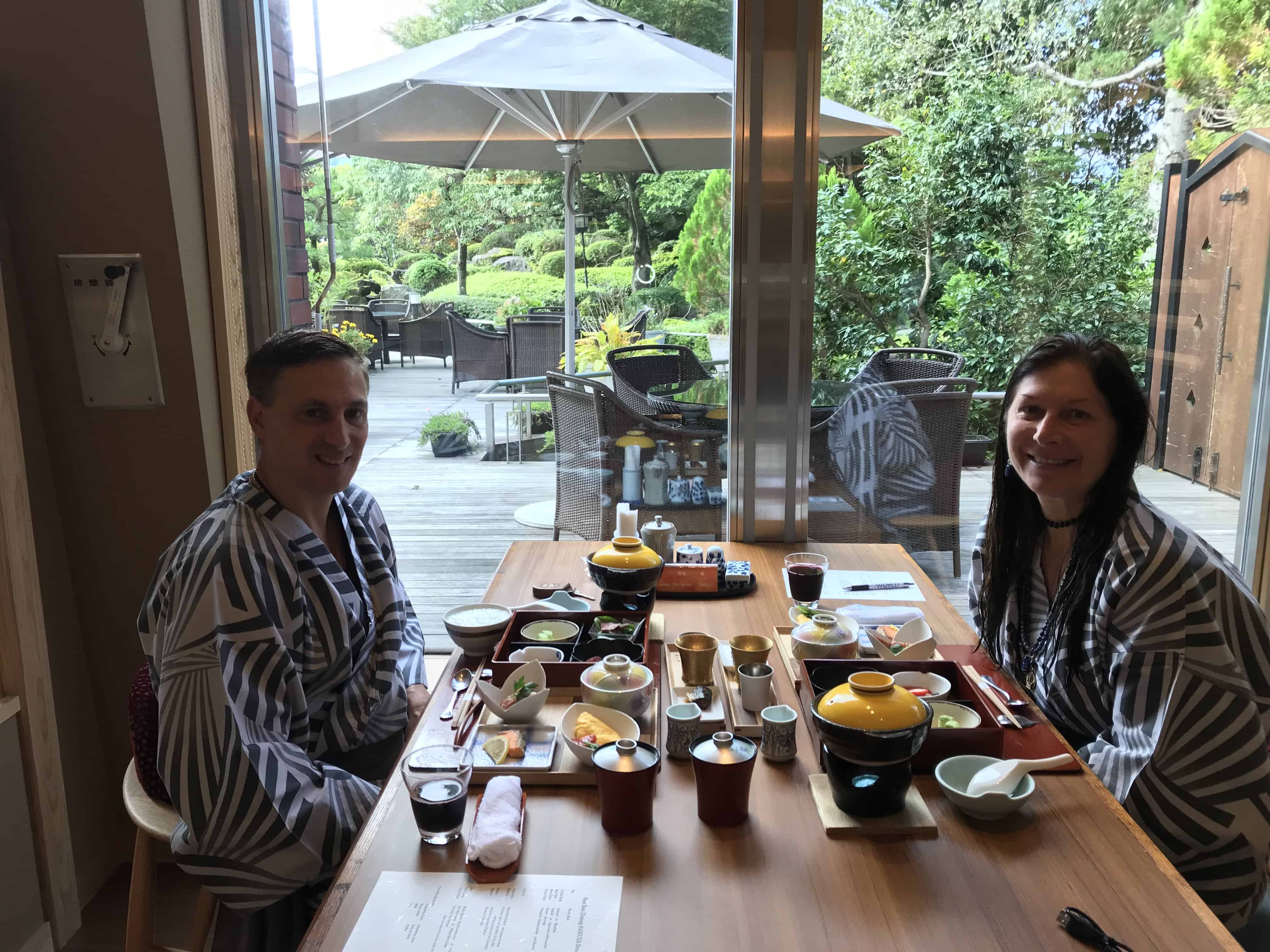
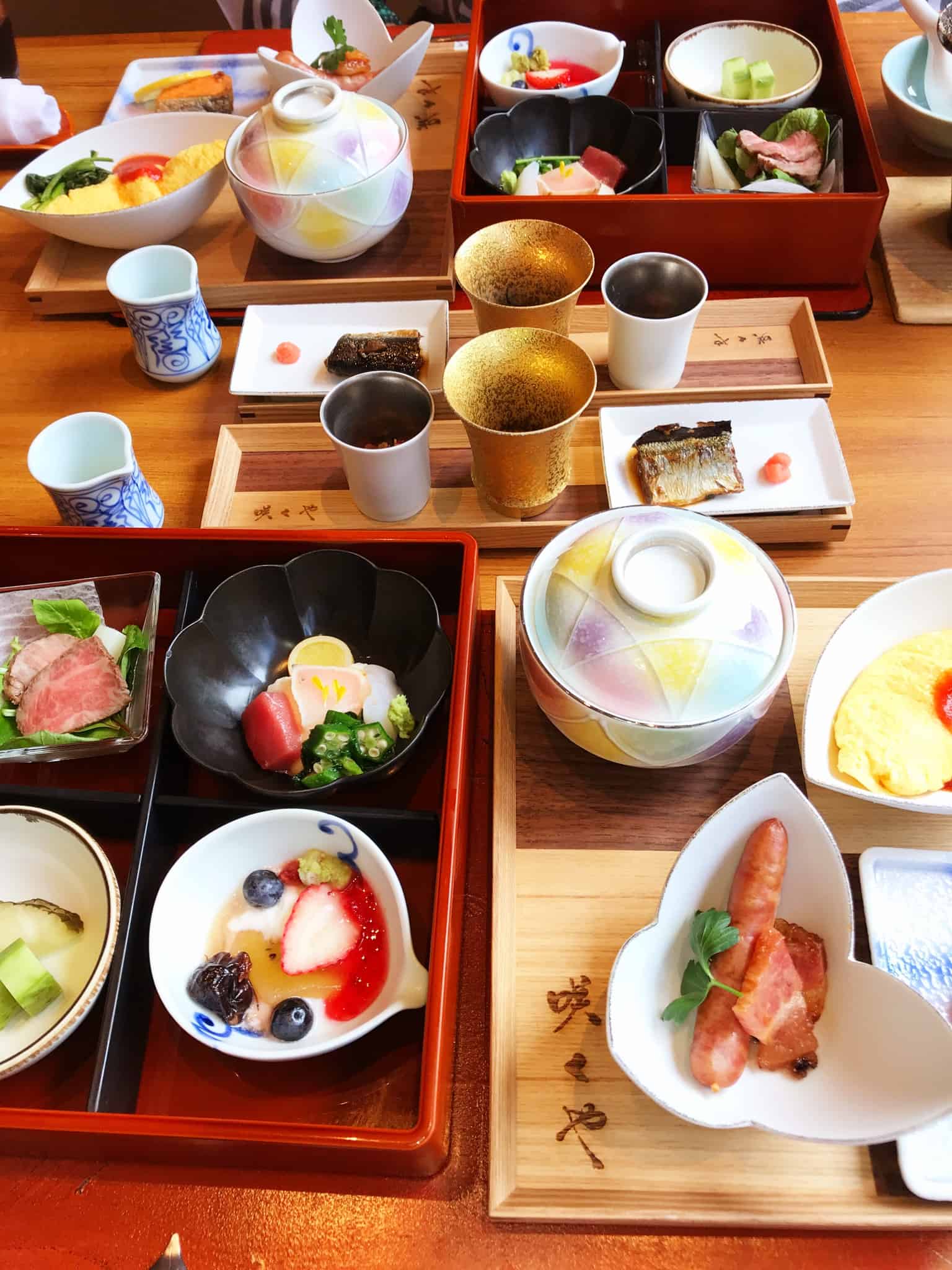

Dinner at Sakuya
Then there’s DINNER at world-class Sakuya. Prepare yourself! Below are the apps before the apps and it doesn’t seem to end. For example, we started with a Potato Pureed Soup with Jellied Consomme and Cavier, followed by Fried Blowfish marinated in XO sauce and Corn Tofu with grilled young corn. It was to die for — enuf said!
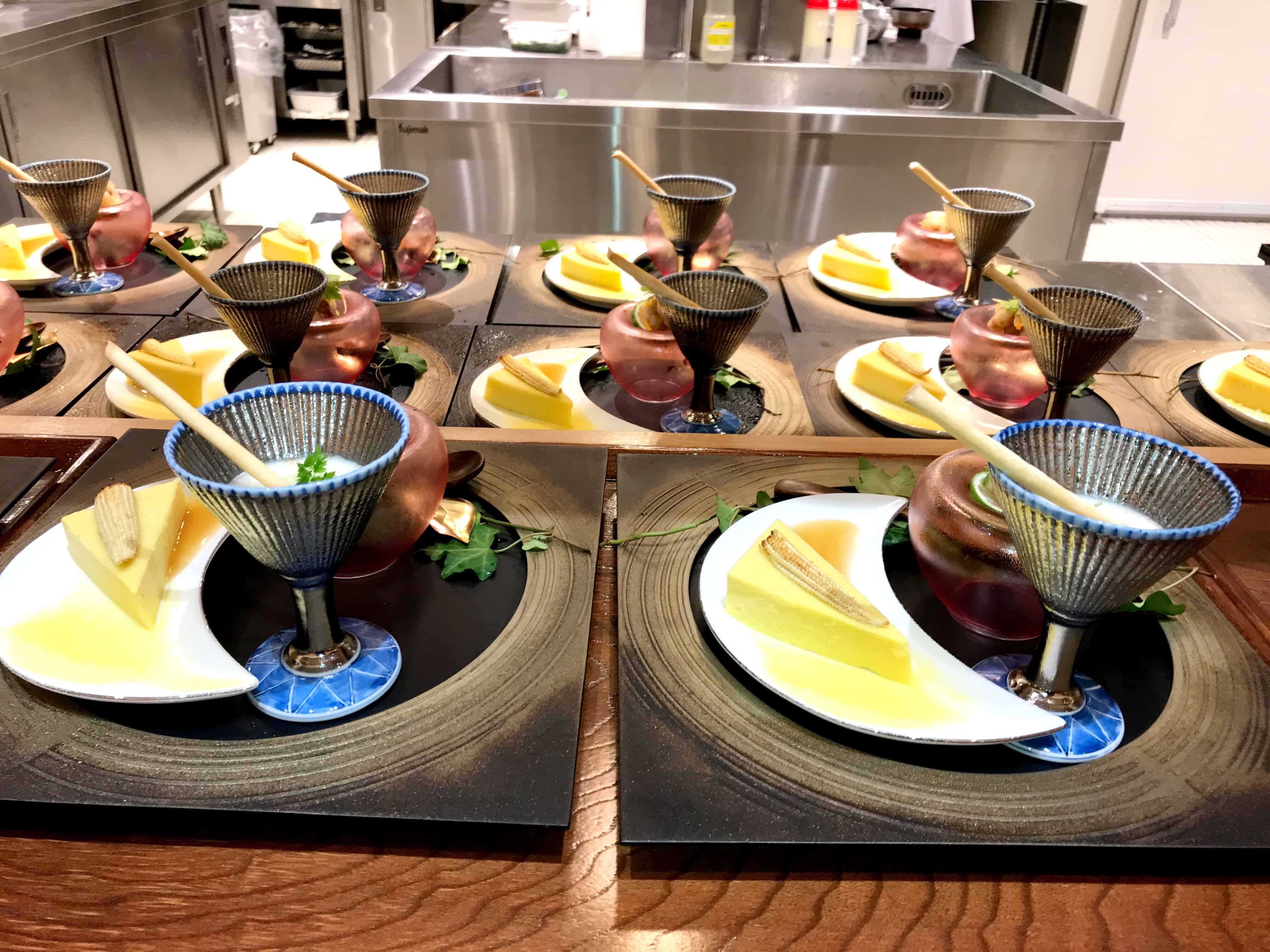
Arriving at the table.

I can’t over-emphasize the service here–we really felt as if people were assigned to our happiness during our stay. Grant you, we were there as press (and they knew it) but as I looked around, I noticed that other guests were getting the same royal treatment. It’s truly a unique place!
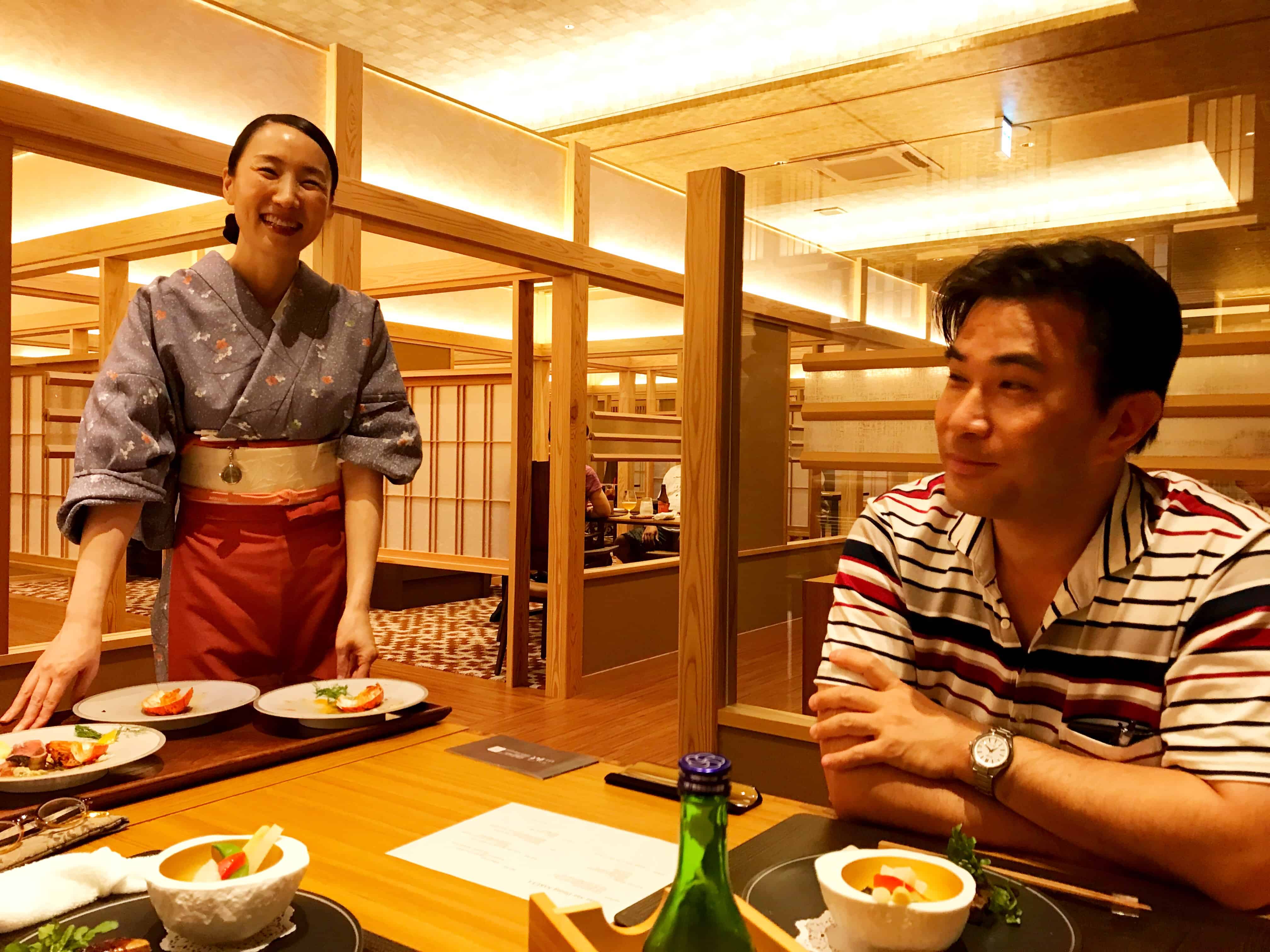
Our friend Koji who joined us for several meals while we were in Yamanashi region. We were so blessed to have his company, knowledge and translation.
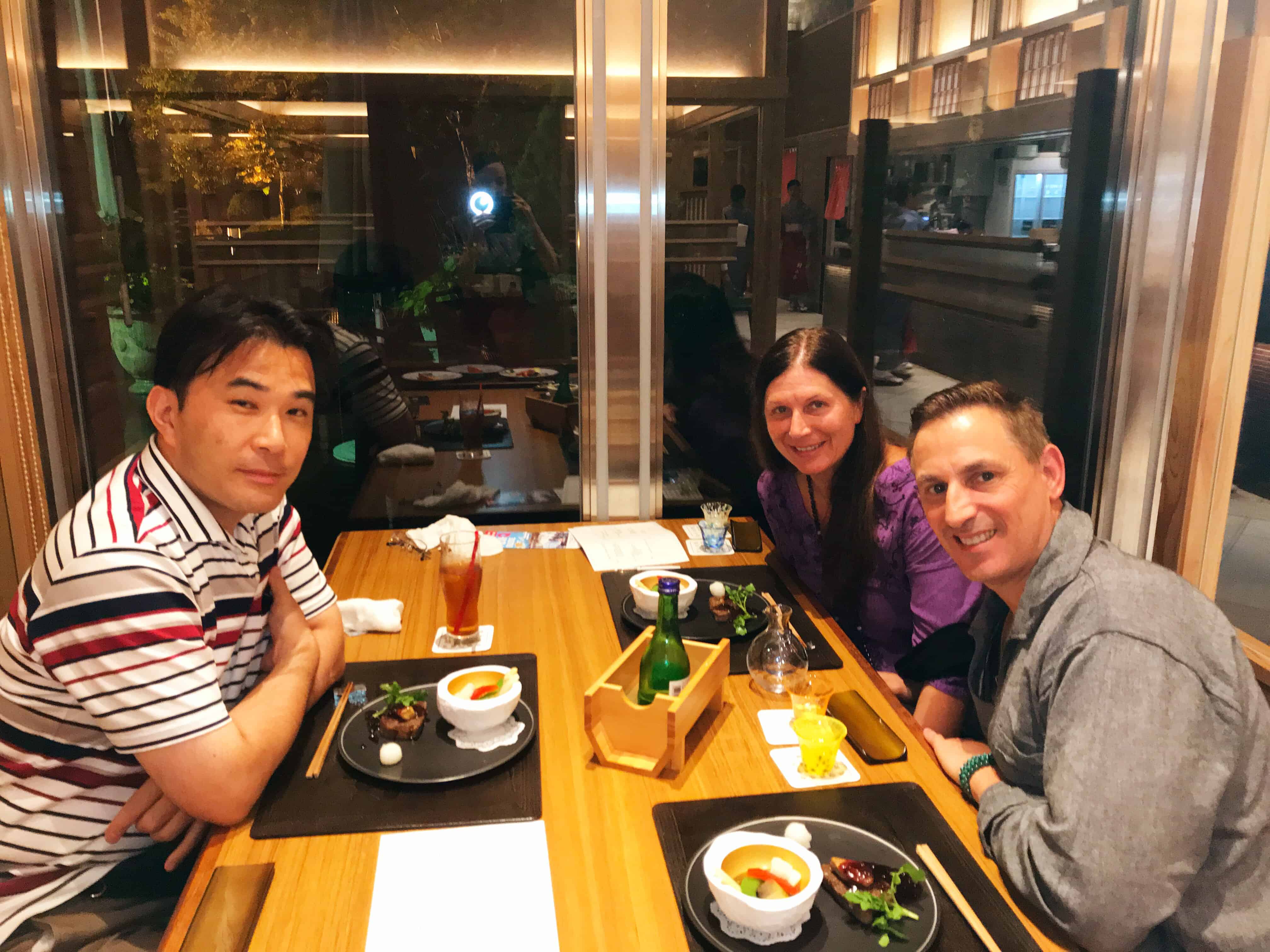
Potato Puree soup with Jellied Consomme and Caviar to die for…..
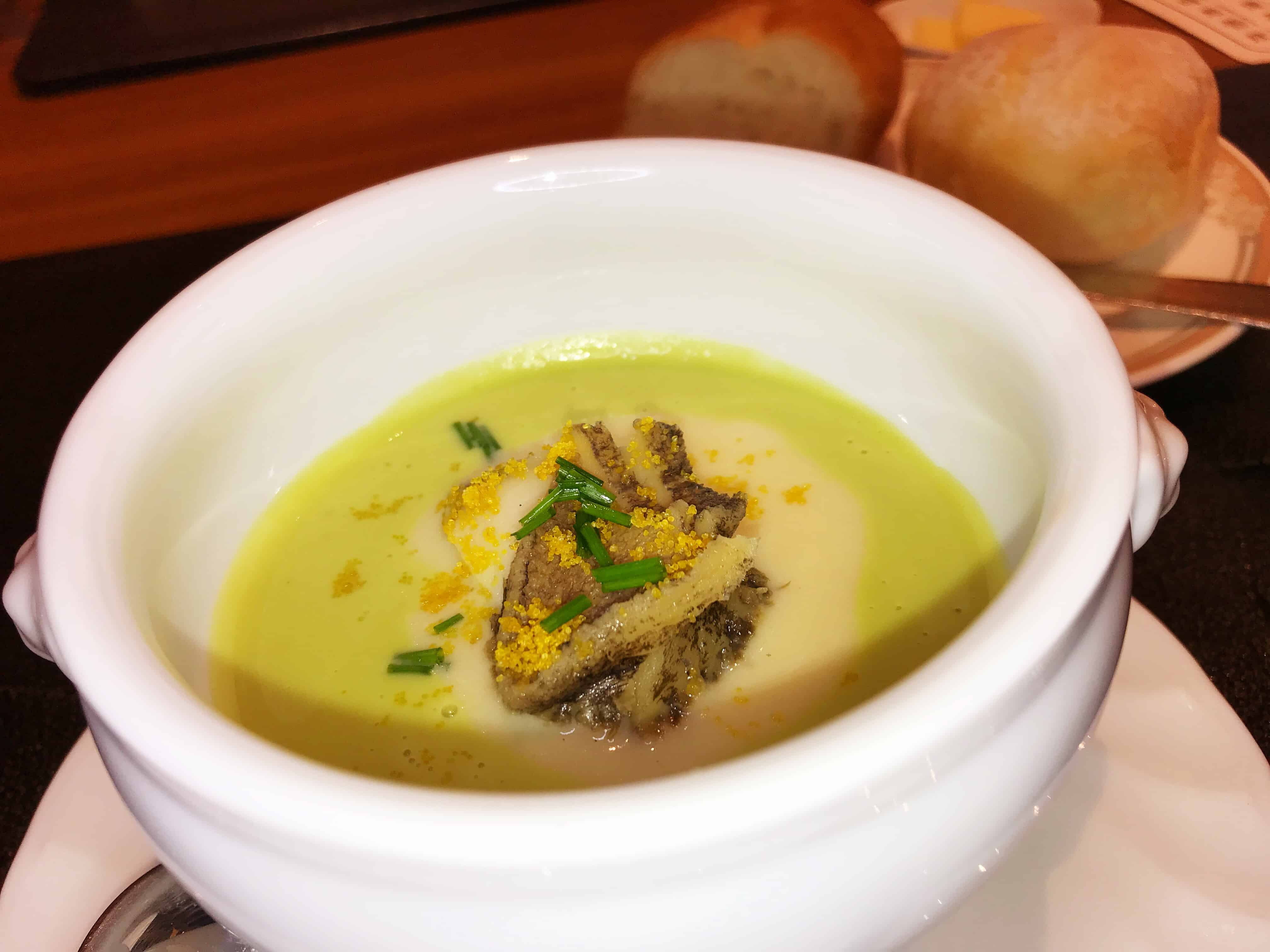
They then served Conger Eel, Flower shaped wheat gluten noodles made from fish, Young Melon, Yuzu and Ume.
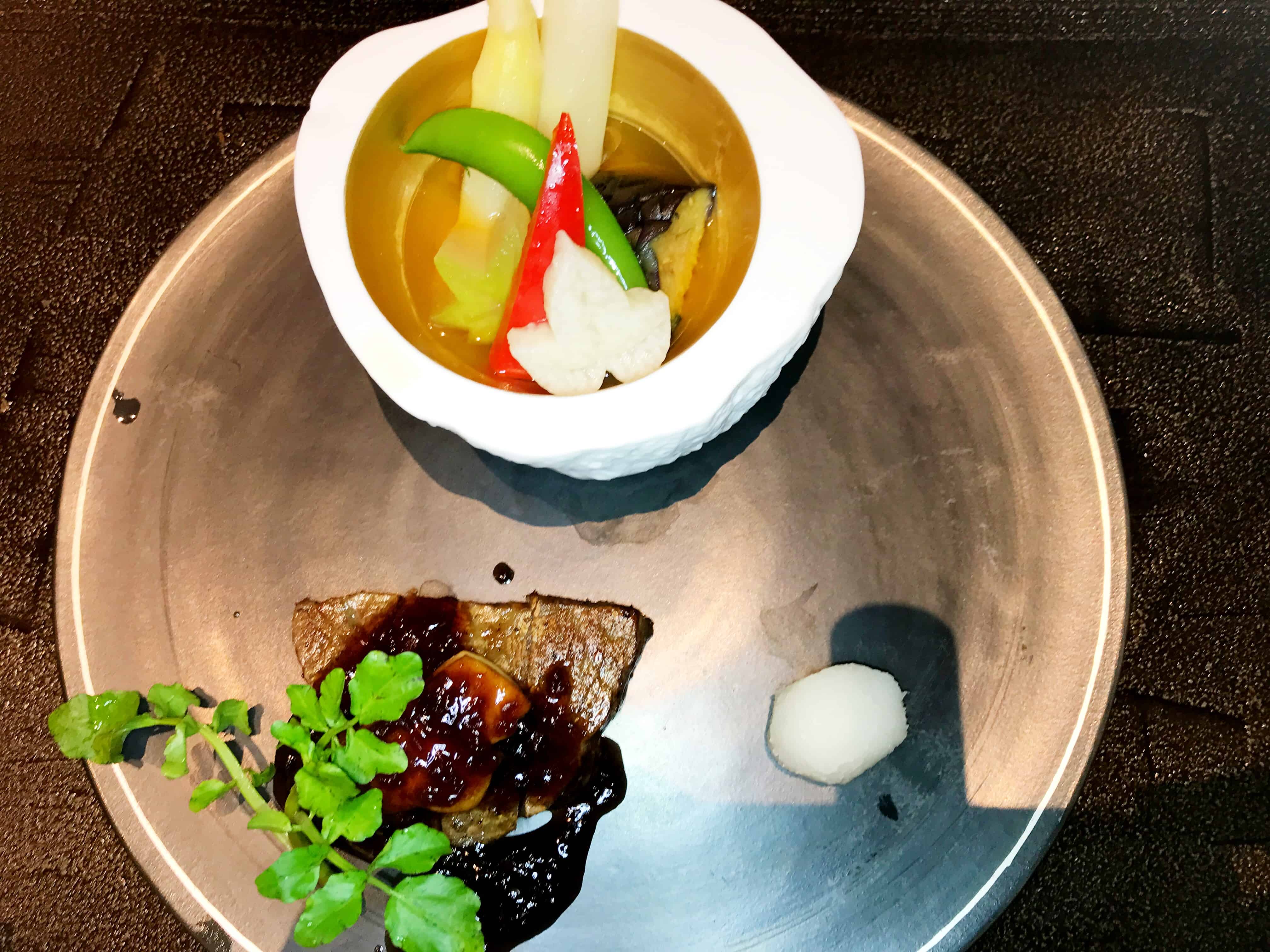
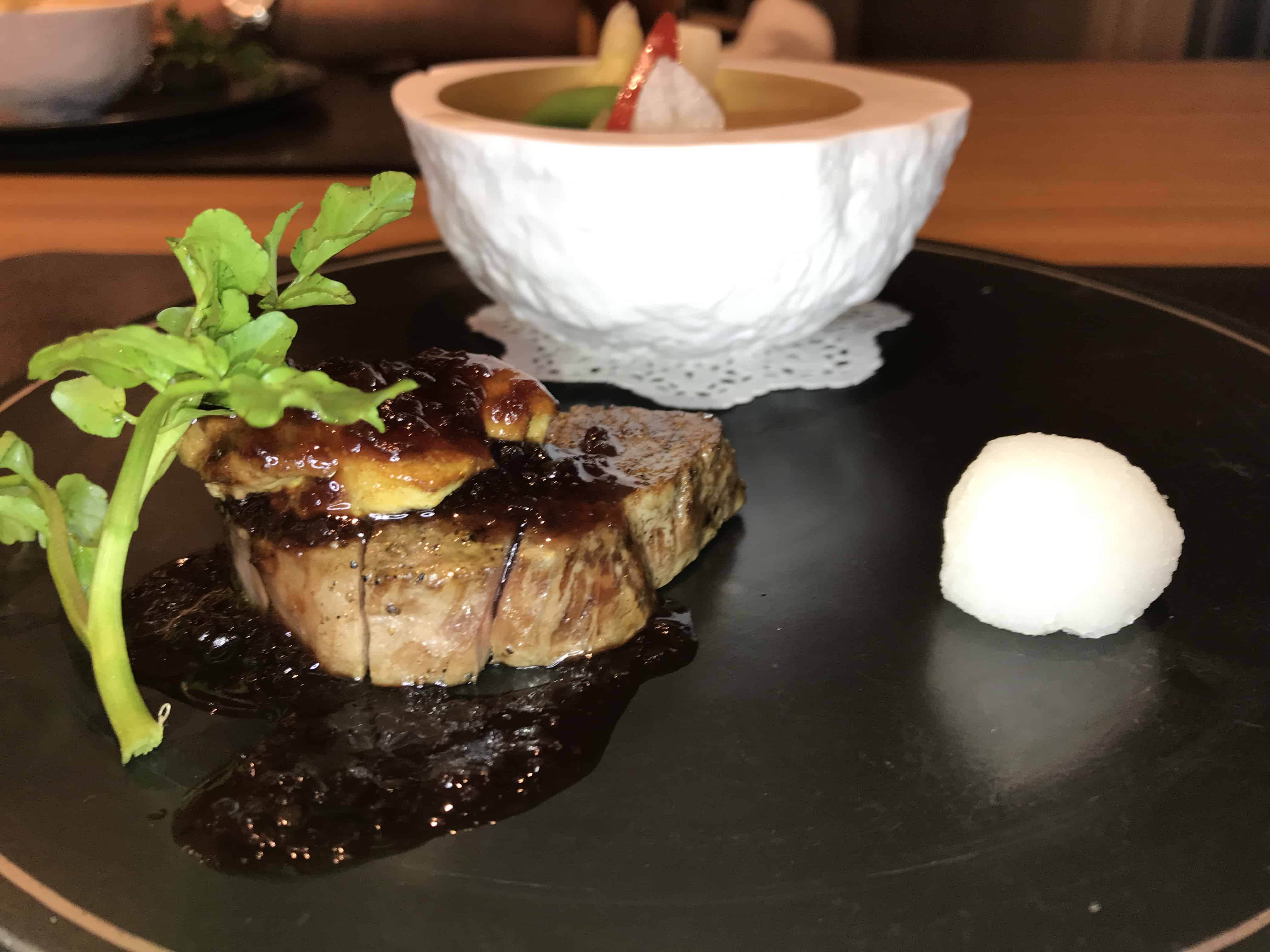
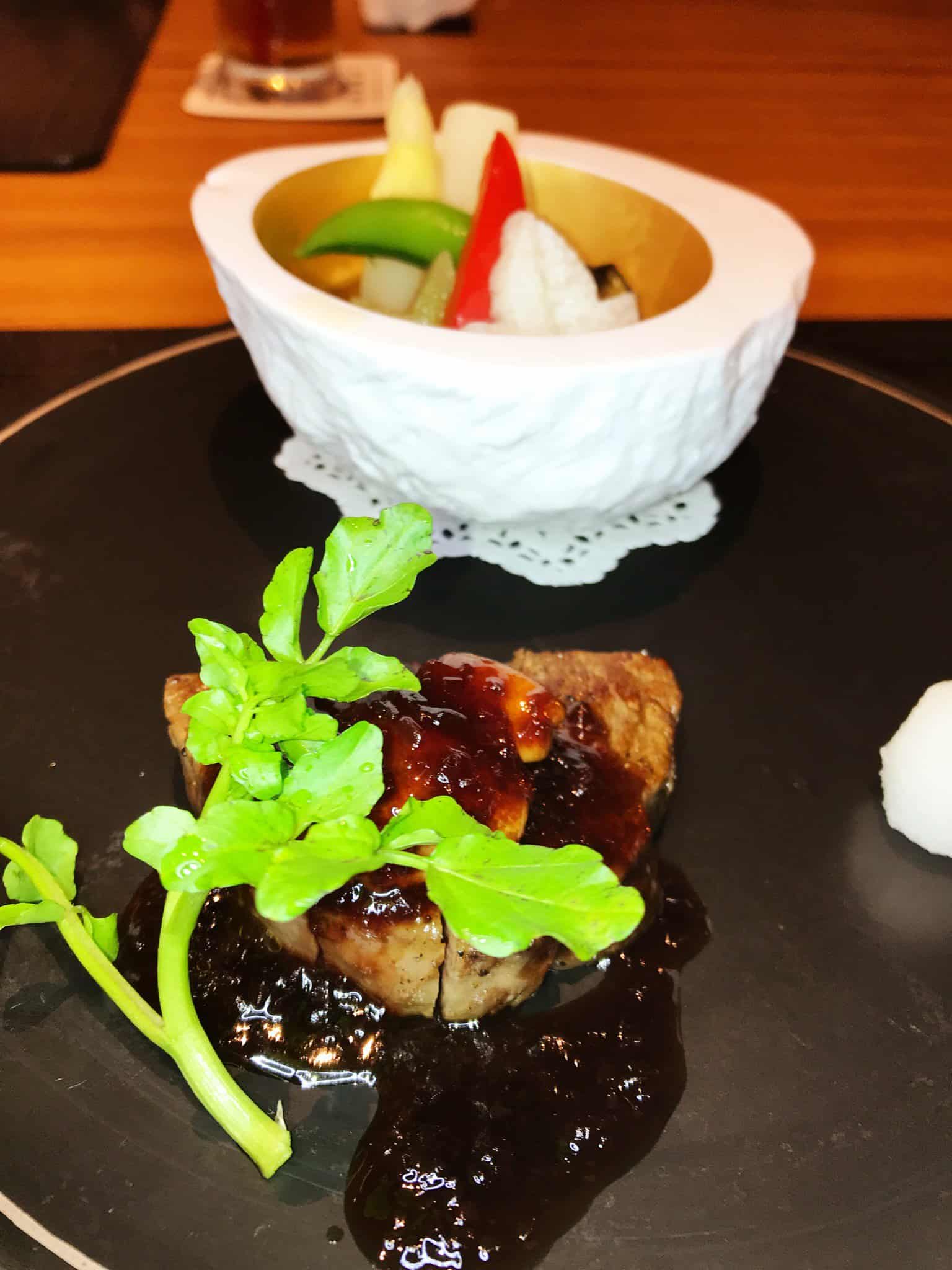
Below, a Sashimi assortment before we got to our main (fish) dish and (meat) dish. In the main dining room, you get both. (it’s a 7 course meal)
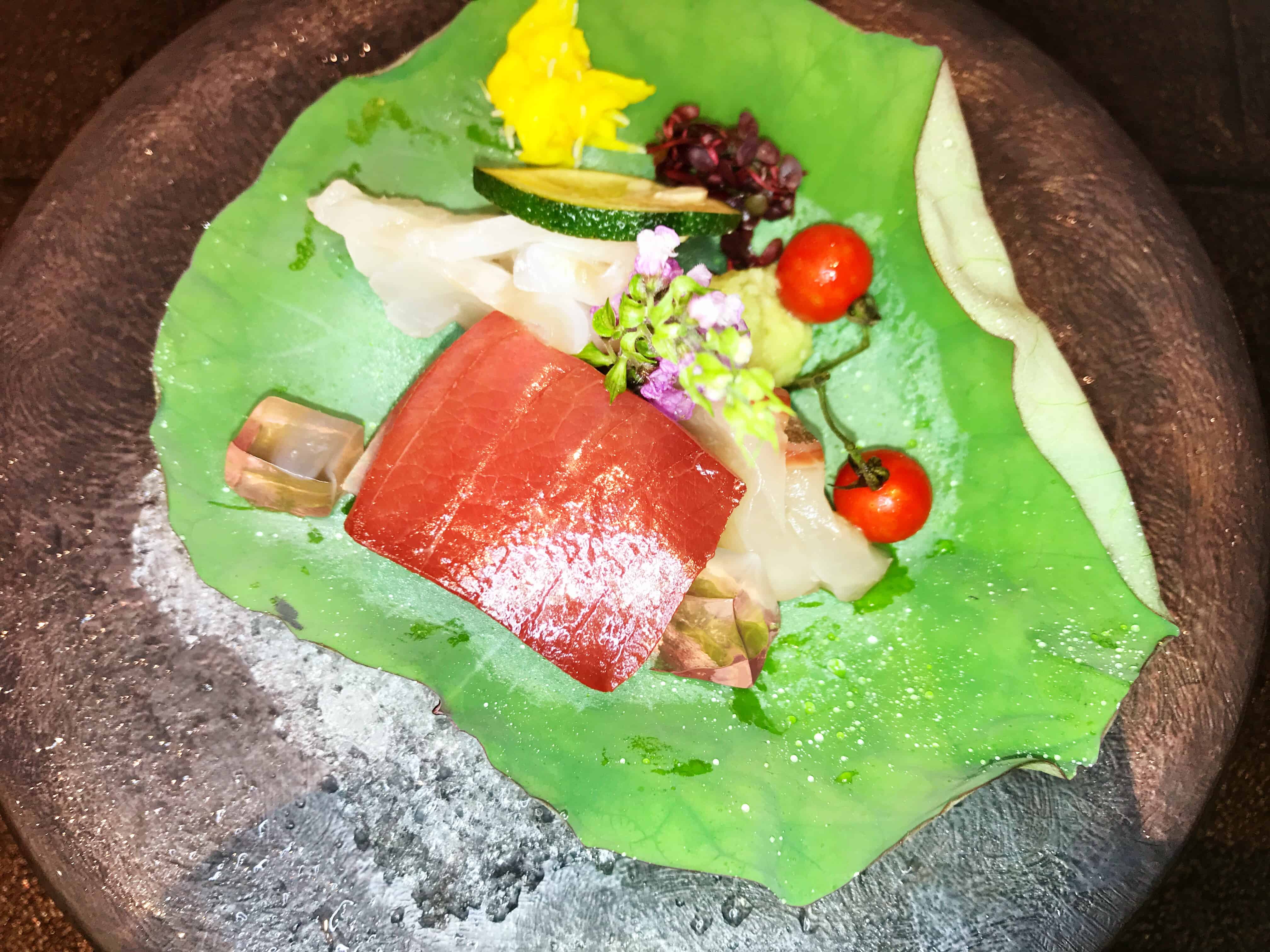

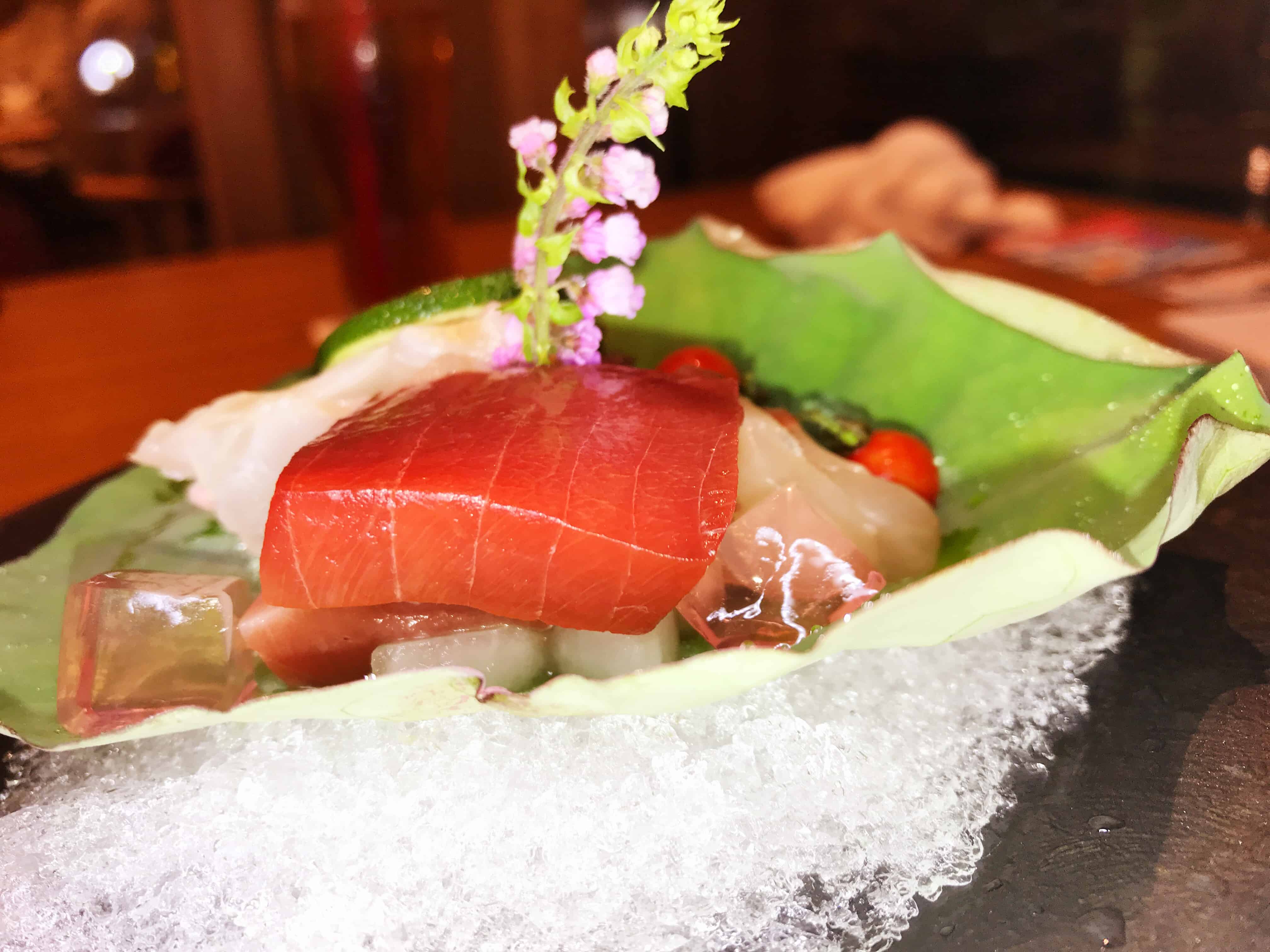
Can you say Lobster? Yes, we had Grilled Lobster and Japanese Sea Bass with vegetables.
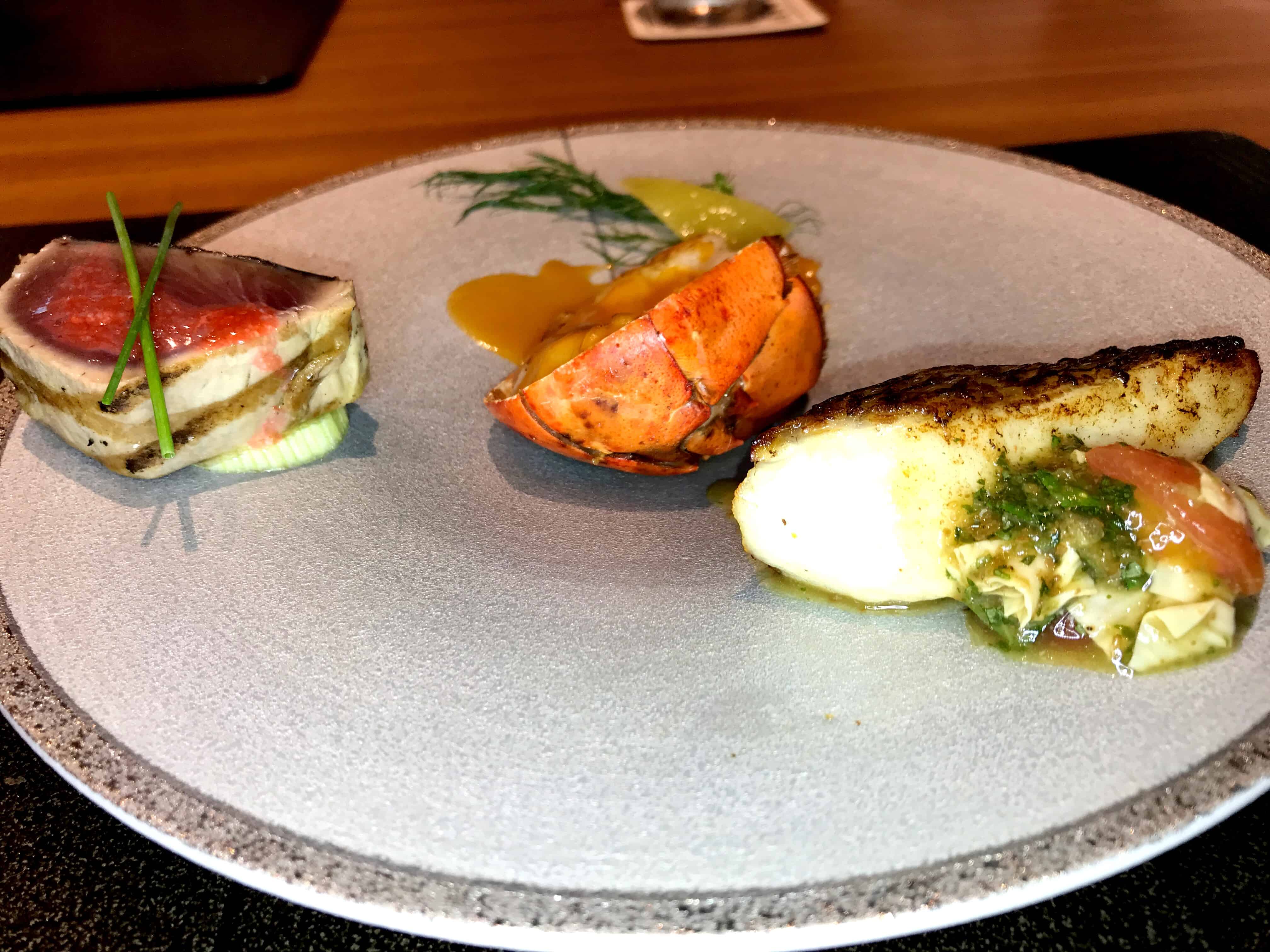
How’s this for seafood heaven? It was indeed! They serve a lot of sea bream, grouper and Bonito fish this time of year. The presentation is exquisite, don’t you think?

Does it get much better than this?
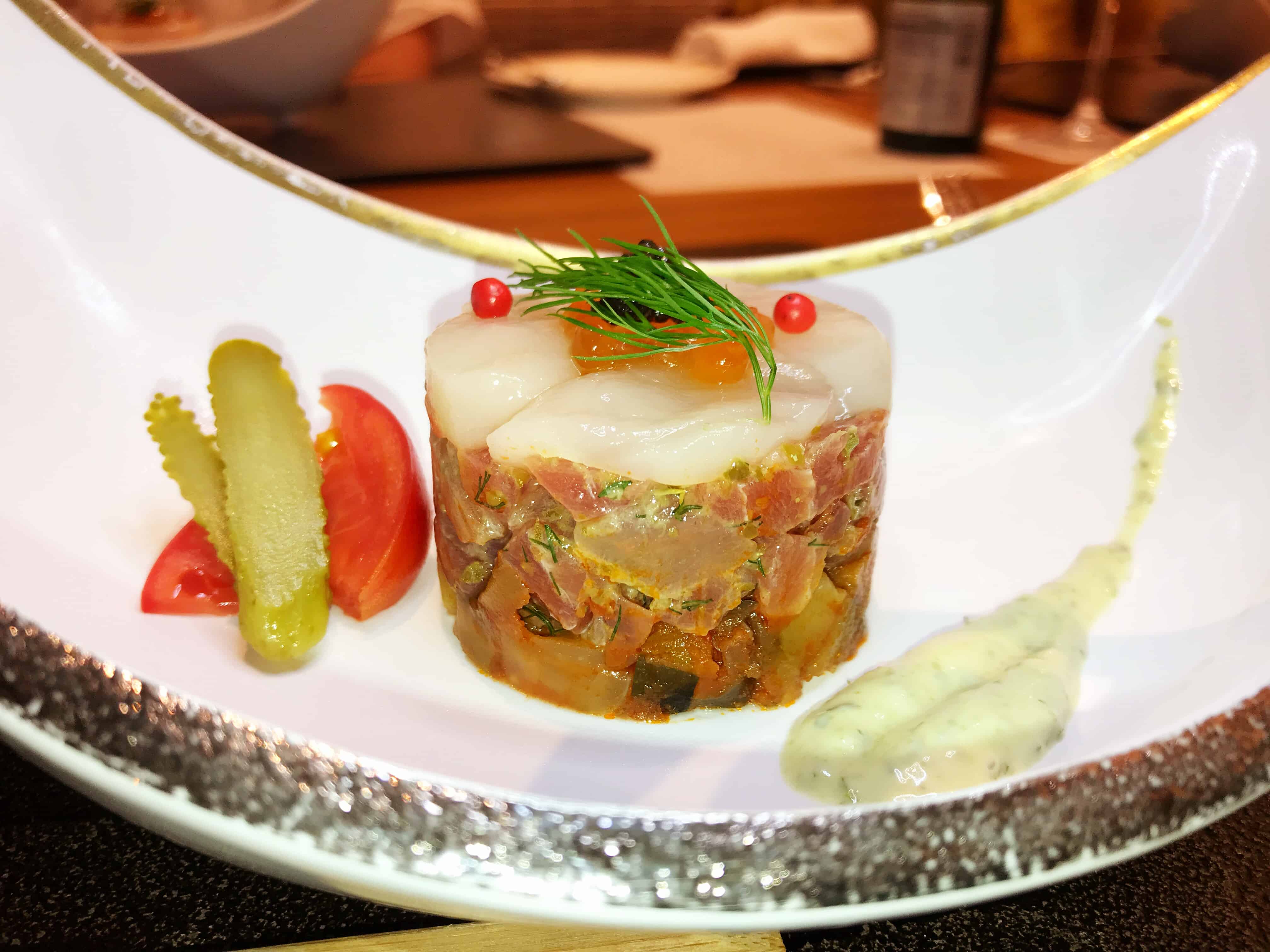
The Koshu Wine Beef Fillet steak with Foie Gras, served in a Port Wine and ginger sauce was heavenly.
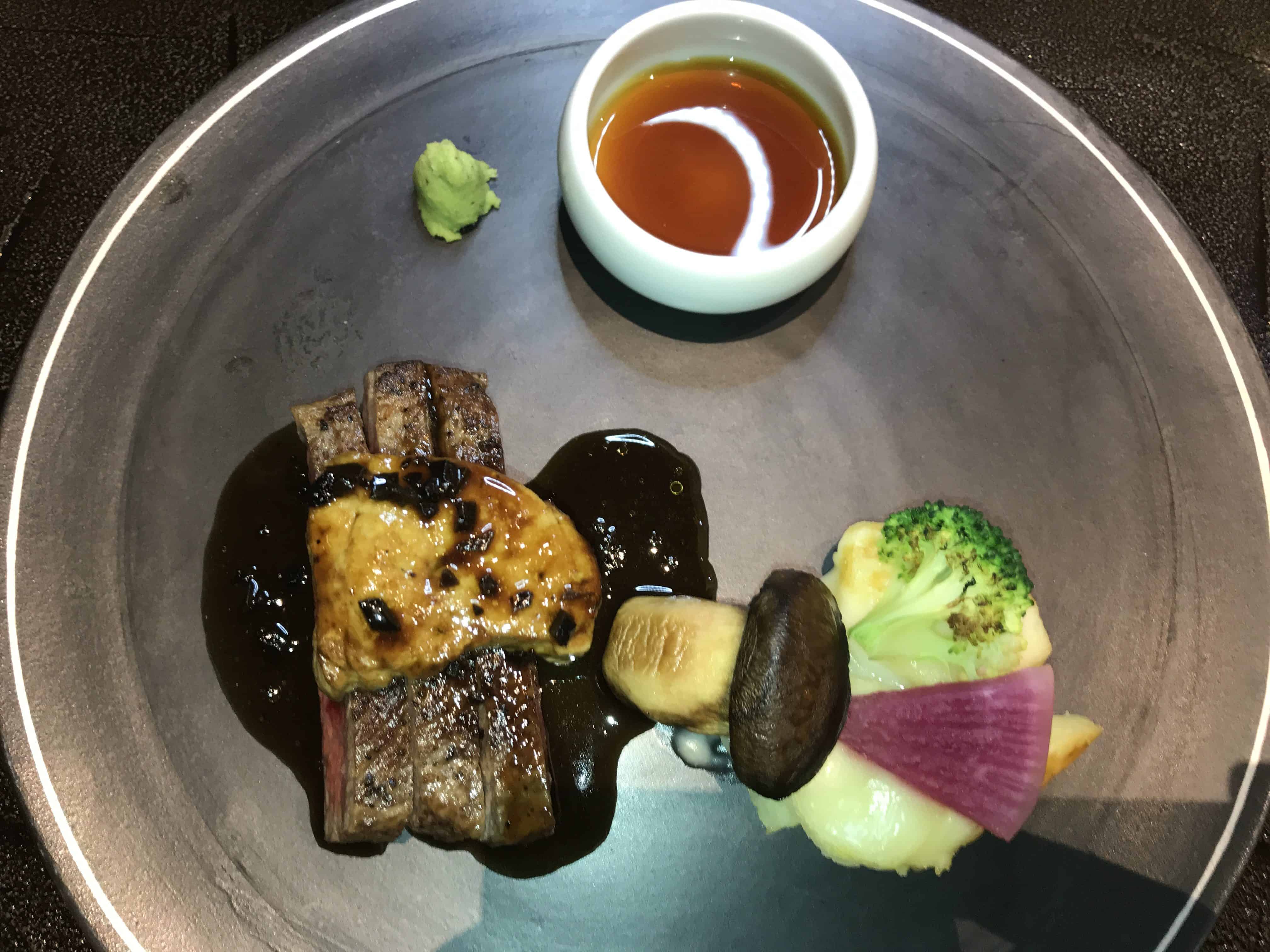
Other divine delicacies.
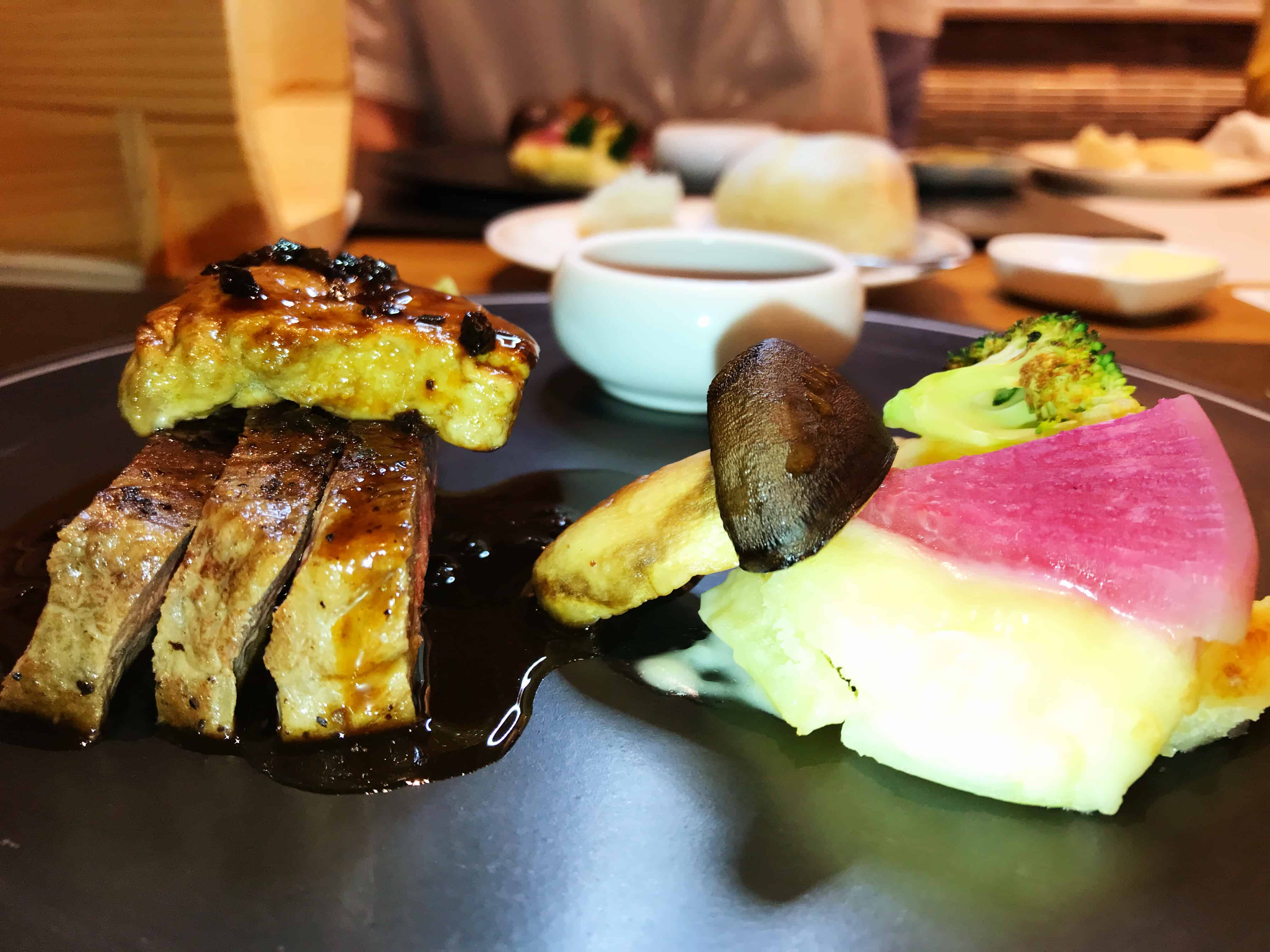
More grilled lobster, served in an Anchovies cream sauce with sea bream, asparagus and lentils (Night 2)
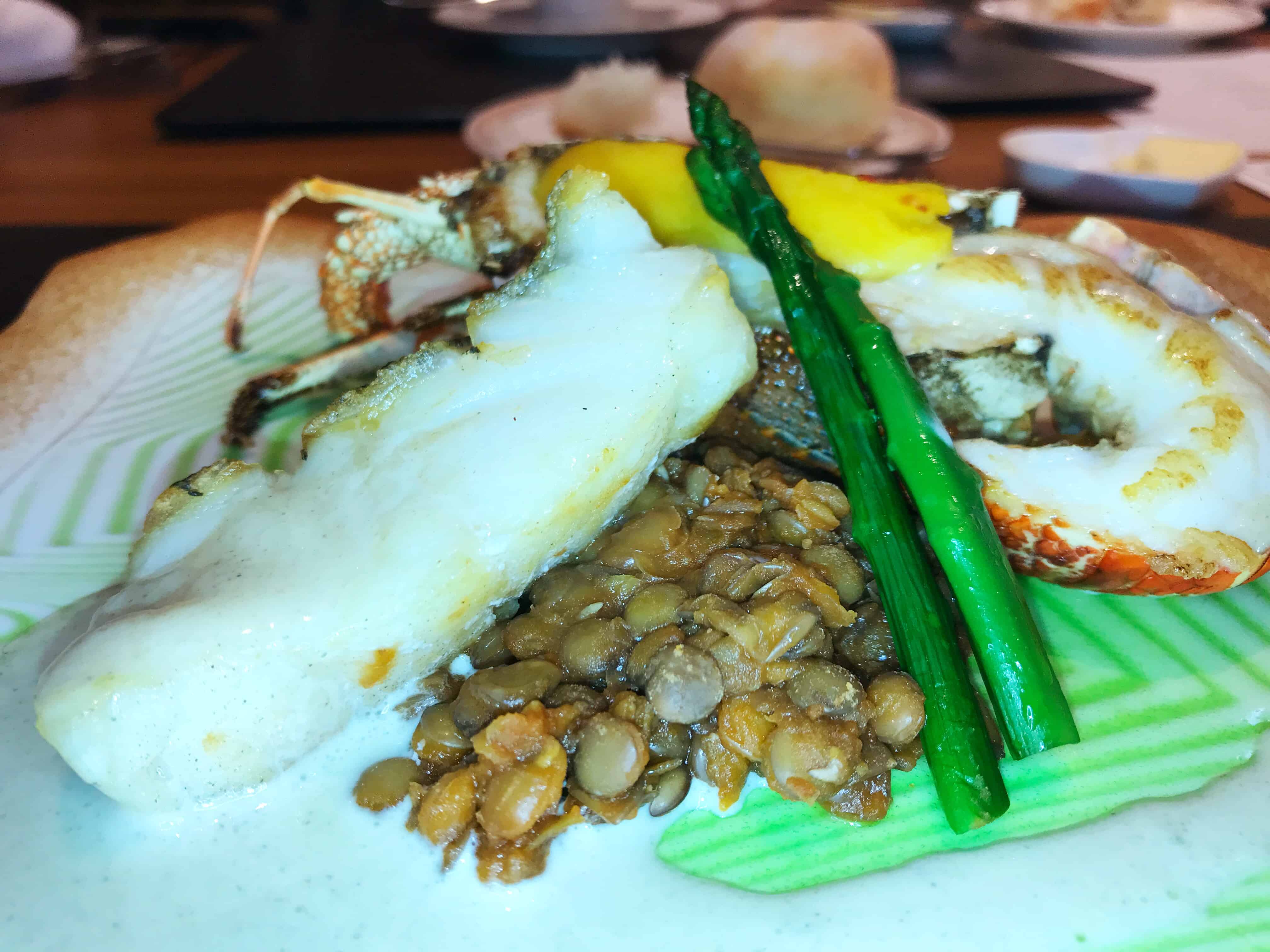
On night two, they surprised us with Orange Sherbet, white cake made with Champagne, French macarons and Cassis. How divine, right?
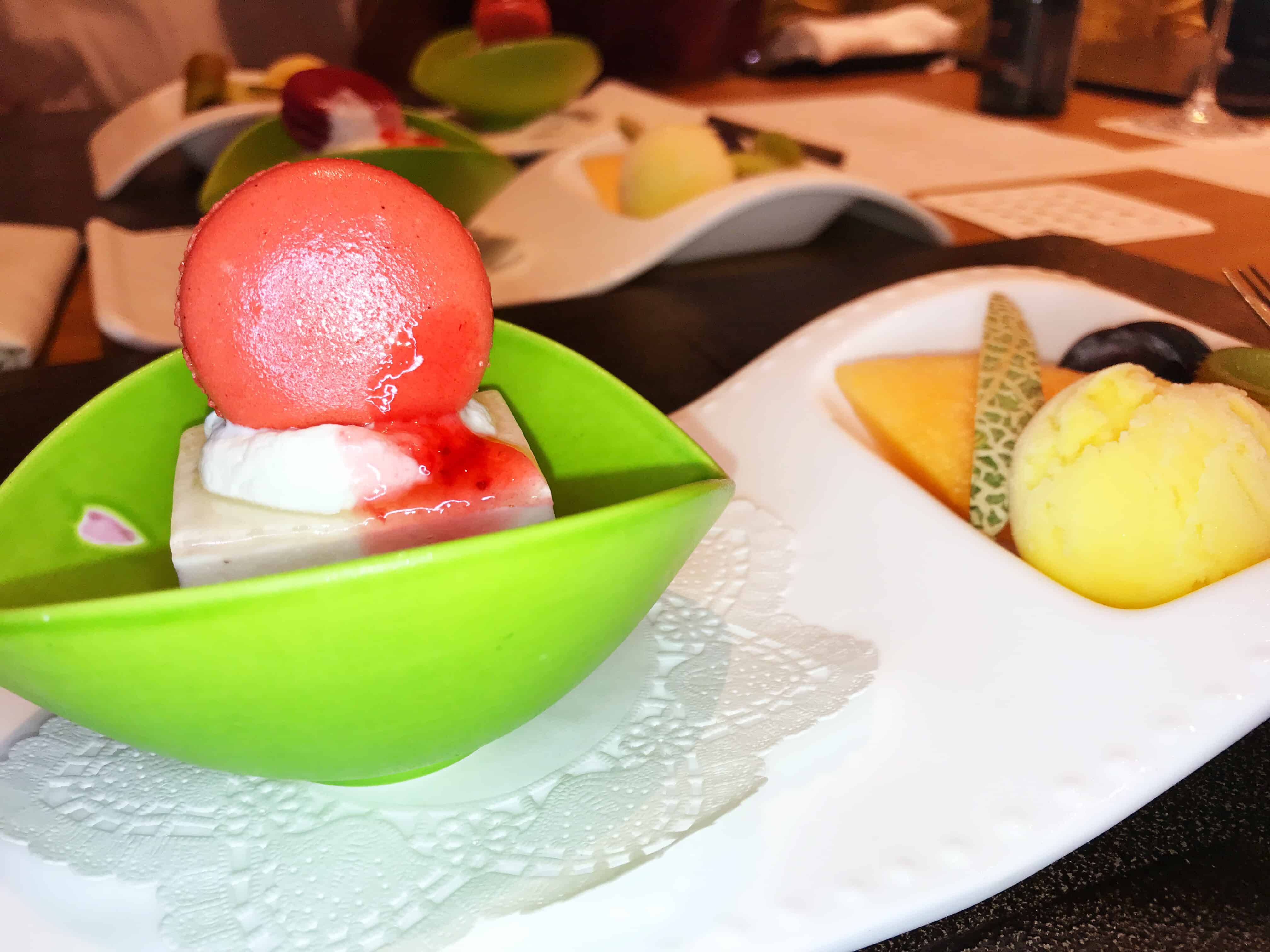
Let’s not forget the SAKE — we tried different types each night!
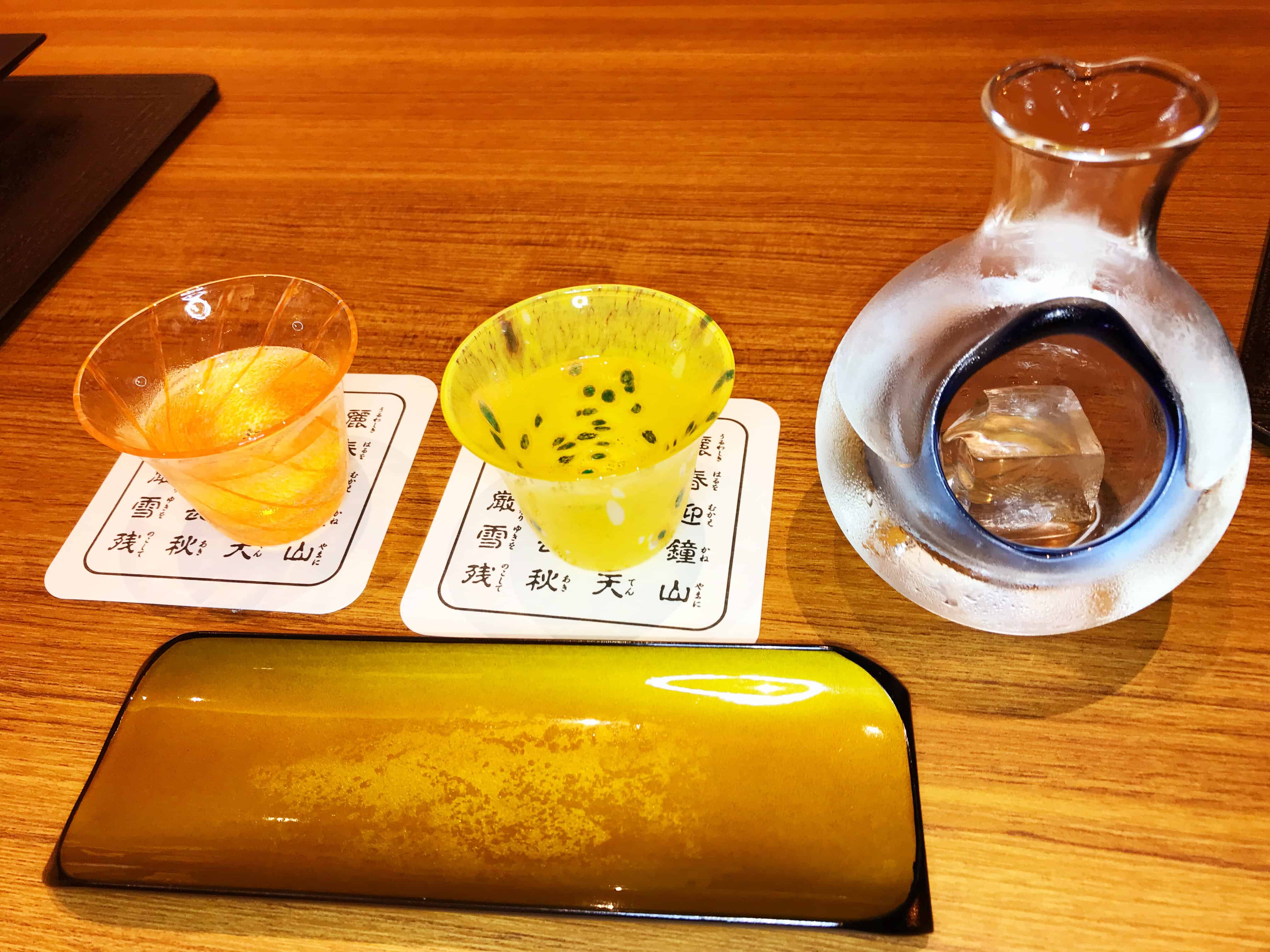
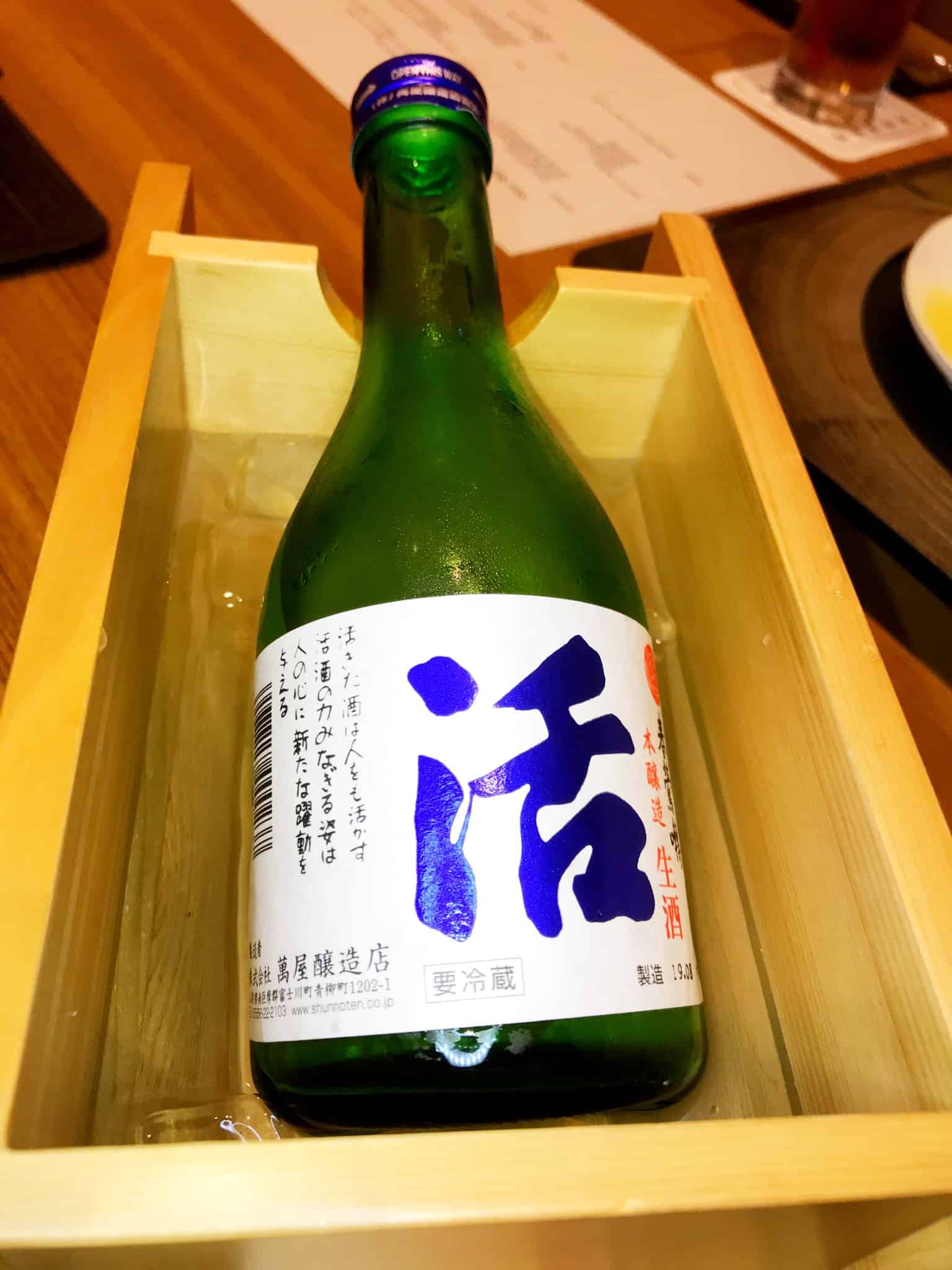
This looks too perfect to eat, right? Melon with Japanese orange jelly and Shine Muscat. It had us both at hello! I think Koji too.
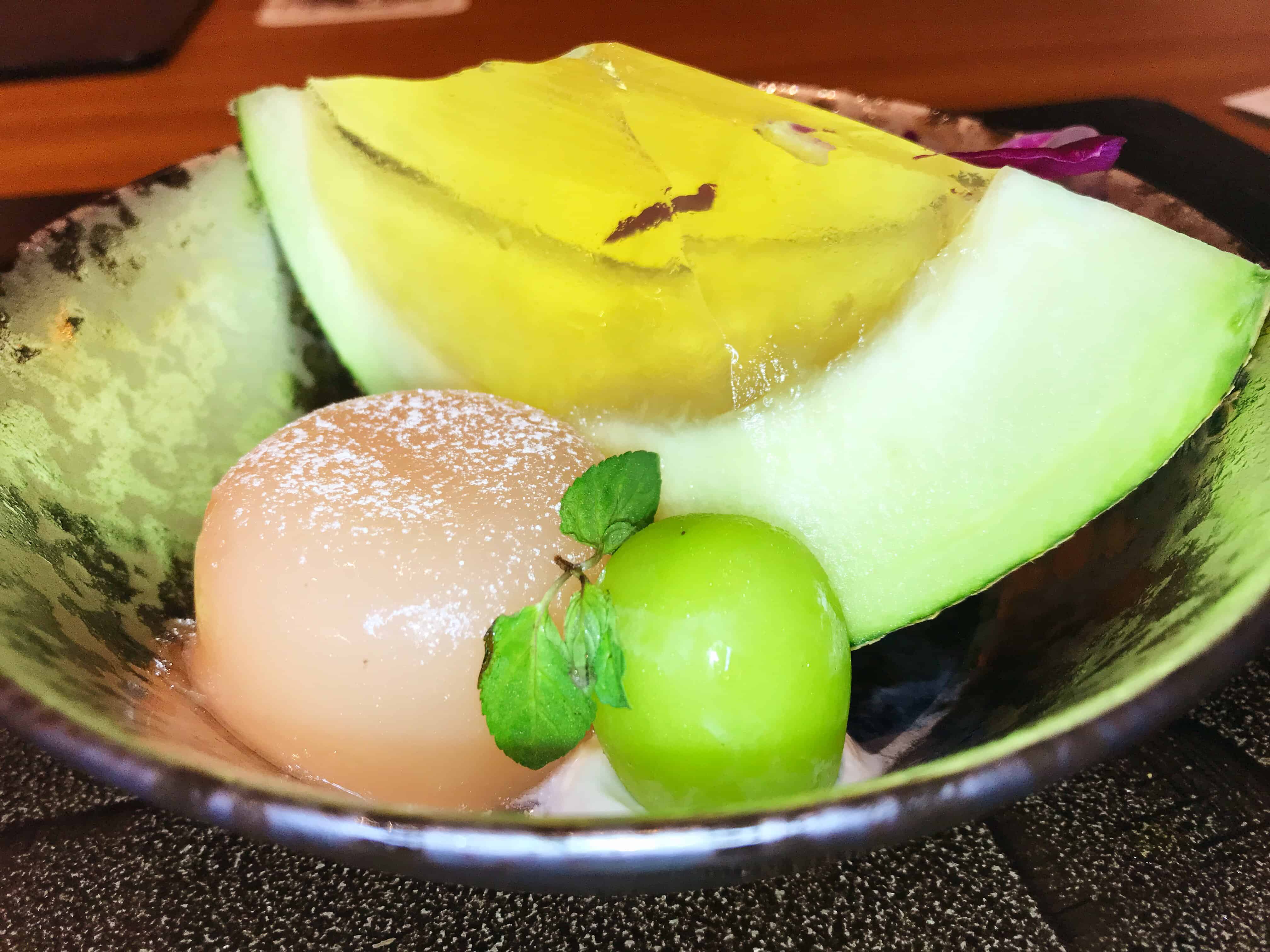
We even had an opportunity to meet the chef.

The Chef at Sakuya in Kaneyamaen
The Rooms at Kaneyamaen
All of the rooms at Kaneyamaen have traditional Japanese mats called ‘tatami’. To suit your preference, there are various types of rooms such as room with beds, open air baths and private gardens as well as rooms with a breathtaking view of Mt. Fuji. Their most luxurious suites are located on the 4th and 5th floors since the views are hard to beat. The suites here are equipped with beds, private open- air baths and of course views.
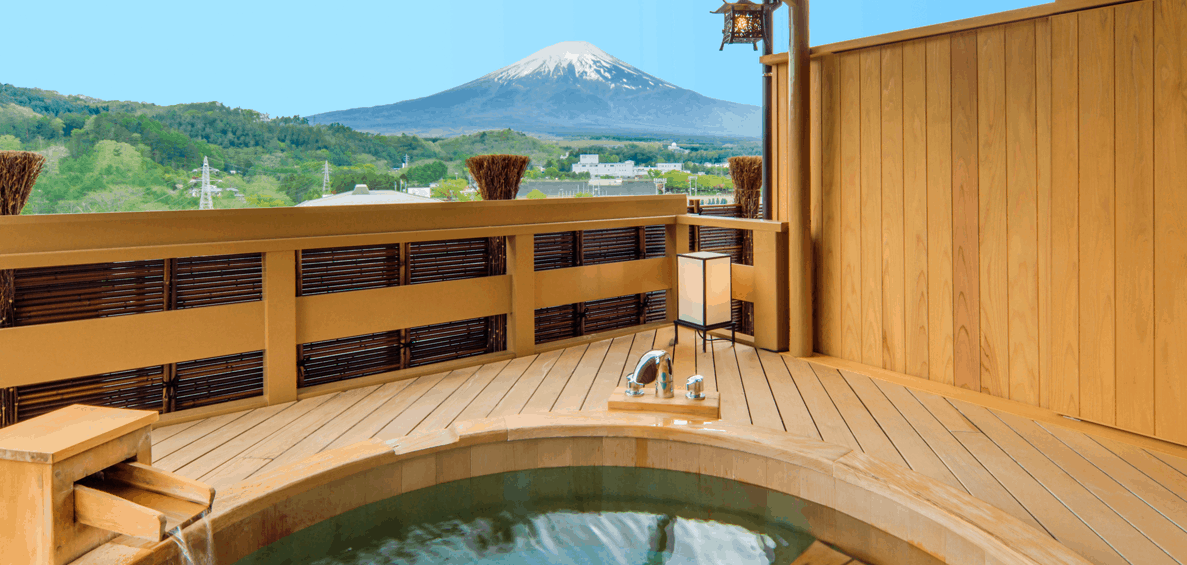
Your own private tub overlooking Mt. Fuji on the upper floors. Above photo credit: Kaneyamaen.

The beds in our room at Kaneyamaen on one of the upper floors!
Robes and various other traditional Japanese clothing and slippers are available as are coffee machines and pots to make hot water/tea. Plus, the bathrooms are so luxe — they have heated toilet seats and a zillion ways to flush and clean. The seats also rise when you enter the bathrooms as is standard in most places in Japan.
View from our room.
The outdoor tub, which was just off the fairly large shower, big enough for two.

The Hot Springs at Kaneyamaen
The oldest hot springs (and public bath) at Kaneyamaen is known as Motoyu and is located on the lower level. The other public bath is known as Akafuji and it is separated between men and women, as is Motoyu as well.

No one was in the hot springs when I was there — normally, you are not allowed to bring cameras into the hot springs but because it was empty, I was able to take a few quick snaps.




My favorite was their third option (yup, plenty of hot bath options at Kaneyamaen), which is known as Fujisan, their open-air bath on the roof. On mornings, they alternate between men and women. On the morning I was there, Mt. Fuji was clouded over but the views were still breathtaking!

The views from the open air bath (hot springs) on the roof, which they refer to as their Fujisan Open-Air Bath. When I was there, Mt. Fuji was clouded over, but we saw it from our room on two of the mornings. This view is from Fujisan, which rotates between men and women on mornings. Note: I was able to get photos because no one was in the open air hot springs when I was there — you’re not allowed to take photos otherwise.

Look at this outstanding view!

And, there’s more!

And, more more more loveliness!


Three different layers to choose from…

I loved the three layers.

The locker rooms in one of the hot spring baths on-site.

Best Time to Go
There is something for every season quite frankly but if you want to see the cherry blossoms, the best time to go is in the Spring. We were there in September which was at the start of the autumn leaves changing color (October is even better). There’s also the beauty of the snow covered gardens during the winter and ever changing views of Mt. Fuji at every season. Fuji-san as the Japanese refer to it, is Japan’s highest mountain at 3,776 meters and revered as the national symbol and spirit of Japan. Every year people come from all over Japan and the world to climb to the peak of this world heritage site and watch the sunrise. This hotel gives you one of the best views of it right from your room.

Early morning from our room
The best time to see Kaneyamaen’s sakura trees in the highlands located at the foot of Mt. Fuji, is mid-late April, which is different from Tokyo and Osaka.
THE DETAILS:
Kaneyamaen Hotel
403-0005
6283 Kamiyoshida, Fujiyoshida-shi
Yamanashi, Japan
Tele: 0555.22.3168
https://www.kaneyamaen.com/eng
_________________________
Note: we were hosted by the hotel but all opinions expressed are entirely our own.

Renee Blodgett is the founder of We Blog the World. The site combines the magic of an online culture and travel magazine with a global blog network and has contributors from every continent in the world. Having lived in 10 countries and explored nearly 80, she is an avid traveler, and a lover, observer and participant in cultural diversity.
She is also the CEO and founder of Magic Sauce Media, a new media services consultancy focused on viral marketing, social media, branding, events and PR. For over 20 years, she has helped companies from 12 countries get traction in the market. Known for her global and organic approach to product and corporate launches, Renee practices what she pitches and as an active user of social media, she helps clients navigate digital waters from around the world. Renee has been blogging for over 16 years and regularly writes on her personal blog Down the Avenue, Huffington Post, BlogHer, We Blog the World and other sites. She was ranked #12 Social Media Influencer by Forbes Magazine and is listed as a new media influencer and game changer on various sites and books on the new media revolution. In 2013, she was listed as the 6th most influential woman in social media by Forbes Magazine on a Top 20 List.
Her passion for art, storytelling and photography led to the launch of Magic Sauce Photography, which is a visual extension of her writing, the result of which has led to producing six photo books: Galapagos Islands, London, South Africa, Rome, Urbanization and Ecuador.
Renee is also the co-founder of Traveling Geeks, an initiative that brings entrepreneurs, thought leaders, bloggers, creators, curators and influencers to other countries to share and learn from peers, governments, corporations, and the general public in order to educate, share, evaluate, and promote innovative technologies.






